


Note from


Festive season brings back respite in global demand levels
Most of the large economies have already witnessed two continuous quarters of negative growth, bringing them under the bracket of inflationary economy. Economies around the globe are announcing renewed fiscal policies to control the growing inflation and curtail the continuing contractions in each quarter.
The ongoing feud between Russia and the EU and the subsequent geopolitical tensions for energy and other resources across the Middle East and Asia is only slowing down the growth path. The trade slump in China due to the lingering COVID-19 pandemic is still stifling the global supply chains. However, the emergence of alternatives like Vietnam, The Philippines and India is proving to be a solace for the manufacturing sector. While East Asian and Pacific regions have showcased rebounding economy in the first half of 2022, the slowing demand, the rising debt and the introduction of short term fiscal initiatives have actually slowed down the rally. According to a World Bank report, this region could see a 3.2 percent growth in 2022, as compared to a growth of 7.2 percent in 2021. Global inflations are also predicted to rise to 8.8 percent in 2022 as compared to 4.7 percent in 2021 and could decline in 2023, at around 6.5 percent and further to 4.1 percent in 2024.
In this issue, we have incorporated some of the latest updates from some of the fastest-growing sectors in Asia, which is, digital payments. We have a special feature article from Eddid Financial who are talking about the fastevolving nature of the payments industry in the region. Flip through the pages to learn about some of the entrepreneurial insights for SME owners, effects on the insurance industry due to the current stagflationary conditions, the viability of property investments in Asian countries like Singapore and what is the current scenario of Data Analytics, Cloud Hosting and AI sector across the globe.
On the cover, we have Várri Consultancy’s Johnny Kollin who shares his insights into corporate consultancy across the globe. He talks about the importance of strategic and financial planning for any business and the incorporation of a proper risk framework. The article will give you insights into the adoption of a proper risk culture for an organisation.
We
EDITORIAL ... WELCOME Managing Director Shankar V S Co-founder & CEO Shashank M Chief Editor Ujal Nair Assistant Editor Kevin Thomas Head of Operations James Head of Production Tom Hanks Head of Research John Smith Head of Media Sales Jordhan Hart Advertising Contact Info@wbooutlook.com Content Managers Emily Justin Wong Laura Edwards Catharine Dsouza Graphic Designer R Ravi Kumar Video Editor Nelson Caitan Accounts Manager Steve Smith Office Address: 32 Pekin St #05-01 Singapore 048762 Phone: +65909 85817 Connect with us on Facebook : www.facebook.com/WBOutlook Twitter : @worldbusinesso3 Instagram : https://instagram.com/wboutlook and Linked In: https://www.linkedin.com/company/world-business-outlook Be sure to check out our website at www.worldbusinessoutlook.com
hope this would be an insightful and an erudite edition for you all.


Story 09 38 Business Development Ideas For SME Owners UAE Financial Markets association signs partnership agreement with ICMA Articles 24
Cover





12 31 62 44 AIM and GBI collaborates to Introduce Services for Regional Digital Infrastructure We are evolving our technology for the evolving global markets Will rising costs hurt the insurance industry in APAC? Google Cloud Partners Coinbase to drive Web3 Innovation
Affin Bank Partners
Berhad Aspire Systems spearheading digital transformation
Affin Bank Berhad (AFFIN BANK), one of the leading banks in Malaysia, has partnered with Aspire Systems, a Global Technology Services firm, to lead its digital transformation journey.
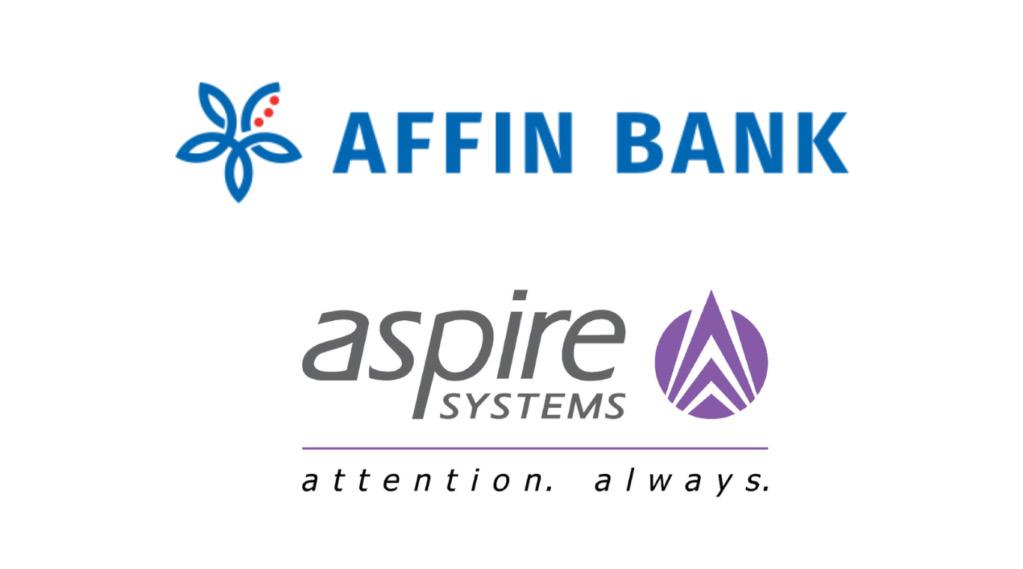
With rapid adoption of digital banking services accelerated by the pandemic, consumers across all ages are looking for a seamless anywhere and anytime banking as well as personalised experience. AFFIN BANK digital transformation program will help
to meet the changing expectations of their digital-savvy customers. Aspire Systems, with its vast experience in managing digital banking transformation programs will help AFFIN to achieve digital maturity quickly and become a truly digital bank.

The bank chose the Temenos Infinity Digital Banking Experience platform (Infinity), which will provide the bank with most features that are available “out of the box”. Aspire Systems, the preferred
global digital partner for temenos digital banking solutions, became AFFIN BANK’s partner of choice.
“AFFIN BANK’s partnership with Aspire Systems is a continuation of our extensive growth strategy to morph into a forward-looking, tech-enabled and customer-centric organization. It will reinforce and complement the innovative products and services that we now have in place, as AFFIN BANK continues to meet the rapidly changing market’s needs and
Banking 06
expectations as well as make the banking experience more convenient for our customers.”
– Datuk Wan Razly Abdullah, President and Group Chief Ex-
ecutive
Officer of AFFIN
BANK
“AFFIN BANK has conveyed a strong vision to use technology innovations to strengthen their business

growth by reimagining the way they engage with their customers. Leveraging the combined engineering expertise and an award-winning implementation center of excellence for Temenos Products at Aspire, AFFIN BANK will be able to build a dynamic and engaging mobile banking experience. We are honoured and excited to be part of this journey.”

This is a critical initiative for Affin Bank, which will help make significant progress on their Omnichannel journey. We’re delighted and proud to be working with one of the leading and fast-growing banks in Malaysia. This engagement also marks an important milestone in Aspire’s success in the APAC region.
– Suresh Bhat Vice President & Head APAC Aspire Systems

Banking 07
Business Development Ideas For SME Owners
We always think about business development as a revenue booster strategy. However, this is not the primary goal of a business development strategy.
Business Development focuses on pursuing strategic opportunities to cultivate commercial relationships and identifying new markets for your products or services.

Business Development Strategy
There are four basic steps for creating a business development strategy for your small or medium-sized organization.
a. Identify Your Target Audience
Identifying your audience is the key to your business development. Always prefer quality over quantity.
It is not necessary to have a large audience, but a high-performing one always is. Identifying your target audience can save a lot of your time. You may waste your time fostering a relationship with an unqualified prospect who will never close the deal.
b. Conduct Market Research
You must learn about your audience before encouraging them to work with you. Get the answers to the following questions to know your audience well.
• What are the primary challenges your audience is facing?
• What are the services they are looking for?
• What is their current problem-solving approach?
• What benefit can your product offer them? These questions will help you get to know more about your market.
Business 08
c. Figure Out The Appropriate Channels
The next step is to set up an action plan which you will follow throughout your journey or at least for the upcoming year. Outline the channels you will be using to achieve your goals. You should assess your yearly revenue goal and how you will achieve those goals.
d. Define SMART Goals
You should set SMART ((specific, measurable, attainable, relevant, time-related) goals for all the channels. It will allow you to track and measure your progress. It is possible that your primary business development goal may not be to generate profit or revenue, but there should be a component aiming to introduce new prospects to the sales funnel.
e. Practical Business Development Ideas
Business development ideas are practical tactics that will help you identify qualified prospects, network more effectively, improve your brand
awareness, and uncover new opportunities. This is how SSDC helped a Medical Device Company lift its sales by $10M in two years by identifying new market opportunities.
1. Innovate Your Networking Ways
It is no longer a secret that cold calls have become less effective compared to the previous time. You should look forward to some new ways to establish a connection with your potential clients. You can host local business events to give your business a boost initially.

Social Media is another great platform to connect with your prospects. You can use LinkedIn, Facebook, Instagram, and YouTube to reach your customers. Create a good connection before you pitch your ideas or sales proposal.
2. Offer Consultations
Provide consultations and assessments to your prospects. You can create videos telling how your
Business 09
product works. Tell them how your products or services will fulfill their needs. It can help your prospects decide whether to convert or not.
Furthermore, this process will allow you to analyze if the target prospect is an ideal candidate or not. Analyzing unhealthy prospects is equally valuable as it prevents you from wasting your time nurturing them.
3. Nurture With Personalized Demos
Whether you are nurturing your clients with phone calls, emails, meetings, or any other mode of communication, it is important that you establish a personalized connection.

4. Provide Prospects Several Ways To Engage With You
Being an owner of a small business, you cannot simply put your advertisements on the billboards and pay a lot of money to digital platforms to showcase your brand. But you can try to engage your prospects with your brand by providing them with several types of content.
All you need is to keep reminding them about your brand through different platforms and content. You can use blogs, videos, emails, and social media posts to connect with your potential customers. You can also divide your prospects based on their interest and meet them with your content where they love to spend time.
For instance, while providing your specific lead with a sales demo on how your product works, you should specifically target them and tell them how your product will benefit them in particular.
Ensure with your customized demos that your product will solve their challenges. This personalized approach will not only encourage them to convert but will also improve your brand awareness.
For example, you are assisting students with their academics and helping them understand their courses. You should create separate demos for the students of different levels and different fields. Offering specific Dissertation Assistance for the Healthcare field and telling them how it will impact their academic performance will boost your revenue and help you achieve your goals.
5. Never Miss On Your Marketing Content
Alongside nurturing your leads and providing them with regular content to improve your brand awareness, it is important to continue with your marketing strategies. Never miss out on email campaigns, social media posts, or cold calling, depending upon your product. Make sure to leverage Instagram and Facebook.
Invest in your website, where you can write about your products and services. Your website is your first impression, and you should never compromise on that. Make your website visually engaging and connect your social media profile to it. Optimize your website for search engines, and you can even go for a PPC campaign to boost revenue and brand awareness.
Business 10
While Summing Up
Business development is not only about increasing your revenue. It is about growing your business and improving your brand awareness. It is more about connecting with new customers. Before you start, take your time to create a business development strategy to identify your audience, market, goals, and channels.

Once you have identified these four aspects, move towards nurturing your potential leads to be your regular customers. Focus on your marketing content and create an engaging website.
I hope that this article has provided you with some helpful knowledge about business development for small and medium-sized business owners. Wishing you the best of luck with your business growth.


Business 11

Introduce
Regional Digital Infrastructure Business 12
AIM and GBI collaborates to
Services for
Alliance International Management (AIM) has signed a partnership agreement with Gulf Bridge International (GBI) to provide digital infrastructure services in the Middle East. These services will be delivered using GBI’s Smart Network, using both GBI’s subsea and terrestrial fibre assets.

The partnership agreement was signed by AIM, on behalf of ‘Alliance Networks’ – a new ecosystem of technology providers and investors who strive to strengthen connectivity in the Gulf by bridging low latency connectivity infrastructure with datacentres and exchange platforms. This joint venture will address low latency edge requirements and ensure seamless content delivery to the last mile through a robust footprint of network nodes spread across the region.
Alliance Networks will leverage GBI’s Smart Network to provide low latency connectivity to all GCC states, Asia and Europe. The GBI Smart Network will enable Alliance Networks to provide high bandwidth and capacity to carriers, cloud and content providers.
The agreement was recently signed by AIM Chief Executive Business Officer, Adel Al-Daylami and GBI Chief Executive Officer, Cengiz Oztelcan.
Alliance Networks brings a full end-to-end connectivity ecosystem under one roof. This empowers carriers, enterprises, cloud, and content providers with accelerated access to networking and datacentre infrastructure across the region, through a single platform, contract, and experience.
Cengiz Oztelcan, Chief Executive Officer at GBI, said: “The GBI Smart Network is well equipped to support our joint venture with Alliance Networks. Our partnership will provide greater redundancy to the Gulf and a reliable alternative route for connectivity customers. We are excited to play a key role with Alliance Networks, providing innovative digital infrastructure services to the region, which possesses all the aspects required to become a global connectivity hub.”
Adel Al Daylami, Chief Executive Business Officer at AIM, added:

“AIM is very pleased to sign with GBI. It strengthens Alliance Networks’ efforts to accelerate the region’s development and enhancement of digital infrastructure capabilities, through interconnecting operators, content, cloud and internet service providers.
“Alliance Networks aims to play a key role in the digital transformation journeys of businesses and nation states across the region by elevating digital standard through our services.”
Business 13
Phoenix Technology
eyeing for global expansion with USD 300Mn investment
Phoenix Technology, one of the leading cryptocurrency mining hardware retailers, is visualizing a global expansion in 2023 – after achieving unprecedented success in 2021/2022.

The company behind the installation of the largest mining farm in the Middle East is spreading its roots beyond the region. The team is developing a largescale site in the US that will be ready in Q2 of 2023 and will utilize advanced technologies, such as immersive cooling.
In August 2022, Phoenix Technology welcomed its new CEO, Carl Agren. He has over 20 years of technical management in the IT and now crypto industries. Agren has served previously as the company’s Chief Operating Officer.
“I am very excited to embark on this new journey with Phoenix Technology. The company has so much potential, and there is no doubt that we will grow internationally,” stated Agren.
“Phoenix Technology is aiming to switch from a regional player in the mining space to a global one. In other words, developing, maintaining, and operating sites all around the world. We have been currently focusing on the North American markets, mainly the US and Canada. However, we are planning on setting foot in other regions to try to identify opportunities in untapped mining areas,” he added.
“We are bullish about the overall market situation, and we are looking to invest our capital into diversified opportunities,” he said.
We are delighted with Carl’s new appointment, having proven himself as COO, we look forward to Carl’s contribution to executing our future plans and strategy. Having a background in Technology and Data-centres, we see Carl as the ideal person to drive forward our global expansion plans for new mining sites and crypto initiatives.
Munaf Ali
The Group CEO and Co-Founder
Business 14
Building on this success, Phoenix Technology has entered into a strategic partnership agreement with MicroBT – a technology company based on blockchain and artificial intelligence, focusing on integrated circuit chips, products, and technical services – making it the exclusive sales partner of WhatsMiner in the region.
Agren shared that Phoenix Technology is devoting $300 million to be invested in different sites that are development opportunities, under development, or currently operational.
Phoenix Technology has been doubling its efforts to expand its operations globally while maintaining its commitment to the environment. As a matter of fact, most of Phoenix Technology’s mining facilities are on hydroelectric grids – the company

is always keen on delivering sites that are green powered.

Moreover, Phoenix Technology is working closely with local municipalities and a crypto data center cooling business on new technologies – immersive and water-cooling technologies – that will improve energy usage by 20-30%. As part of its expansion plan, Phoenix Technology is also working on several products that will change the mining game and help customers develop their capabilities.
Phoenix Technology is also hoping to establish partnerships with other companies that are also pushing the boundaries of mining, such as gas flaring, to bring more technologically advanced solutions to the local market and globally.
Business 15
Apply Digital announces acquisition of E2X.COM

Recently Apply Digital, a global innovation, products, and experiences company, announced the acquisition of E2X.COM Ltd., one of the London-based commerce strategy and development agency.

“As we have continued to grow the value we offer clients, we felt adding a strong commerce capability was critical. We wanted a modern, culturally aligned partner — E2X.COM was that perfect match,” said Gautam Lohia, Co-founder and Chief Executive Officer of Apply Digital. “From day one, we realized our collective potential, with our focus on composable products and digital experience and E2X.COM’s deep expertise in commerce. Together, we’re excited to build compelling digital solutions for our clients.”
This strategic partnership will form one of the largest MACH-focused digital solutions companies across the areas of commerce and digital experiences. We know that having a great digital experience naturally pairs with commerce, especially when it’s grounded in composable technology. We also know the value of creating a positive environment for our partners and people to reach their full potential. It’s great to find that shared value with the Apply Digital team,” says E2X.COM’s Managing Director Neil Trickett. “This strategic partnership will give our teams more opportunities to create excellent digital experiences for modern clients. We look forward to working together on digital solutions for companies that recognize MACH’s composability and want to increase their agility, resiliency, and ability to deliver business value.
Following the integration, Apply Digital will have over 550 employees based in nine global offices across Canada, the US, Mexico, Chile, the Netherlands, and now the UK.
Business 16



Business
3 in 4 APAC Marketers
Lack Confidence in their Data, Analytics, Insights
To spot sudden, disruptive changes in customer and market behaviour, modern marketers need high-velocity data marketing, according to a new report by the Chief Marketing Officer (CMO) Council and GfK. These data systems need to be agile and adaptable with the ability to acquire real-time, relevant data signals and close the gap between data, insights and action.

This new research examines the high-velocity data marketing maturity curve, including critical capabilities today, plans for the next 12 months and gaps between top performers (i.e., marketing leaders who are most confident in their data/analytics/insights systems to win and retain customers) and bottom performers.
Key findings for Asia Pacific from the survey of over 300 marketing leaders globally uncover
• Only 1 in 4 marketers are very confident in their data systems to win and retain customers
• What’s holding them back? Budget to improve MarTech; systems that connect data silos; talent to move from data collection to action
• And while 85% of marketers say direct access to customer data is critical to gain competitive advantage —> Only 9% of marketers say customer data is highly accessible
• Top barriers to data access: insufficient technology; lack of data process; data control lies elsewhere
• Once they have the data, gather actionable insights is slow —> Only 18% of marketers say they can move quickly from data gathering to actionable insights
Big Data 18
“CMOs around the world have entered a new era of high-velocity data marketing,” said Donovan Neale-May, Executive Director of the CMO Council. “Many need to get better at extracting relevant data signals across channels, generating actionable insights, making insights available in real time, and going deeper and more granular with customer insights.”

“The CMOs need to take on the mantle of a purpose-driven evangelist — using data to help meet the desires of consumers who insist that their brands need to be as human as they are. By bringing the art of intuition and creativity to the science of data — at the speed of today’s decision-making — CMOs can and should become catalysts for healthier, more compassionate brands that deliver sustainable growth.”


Big Data 19
Gonzalo Garcia Villanueva, CMO of GfK


Cloud Tech 20
Ashish Proothi of Xebia
A full stack AI strategy is the way forward coupled with Cloud hosting
For the two decades in this period, the software sector largely comprised of firms looking to provide software services to global clients. The first wave of the global Internet and dot-com era created intercontinental Internet infrastructure. Indian companies were able to leverage this infrastructure to deliver software development-related services to global enterprises remotely. Realizing the potential and the availability of talent, some multinational corporations established their own offshore development centers in India. Global multinational companies also realized India’s potential in software services and started increasing their direct presence in India by setting up IT, business process management (BPM), and R&D centers.
Today, several centers have matured to deliver end-to-end products from India. Uber set up an
engineering center in 2017, and OVHa unicorn from France, which provides cloud services, set up an R&D center in the country last year. The combination of available talent, lower rates of brain drain to the U.S., large technology companies’ R&D centers, and global venture capitalists has helped accelerate the growth of the start-up ecosystem. In the last few years, 18 start-ups touched USD 1 billion in market capitalization. Walmart bought India’s largest e-commerce company, Flipkart, which is only about 11 years old, at a valuation of USD 21 billion.
In an exclusive email interaction with Ashish Proothi, Head – APAC, Xebia, World Business Outlook learnt about the impact of some of the major disruptors like AI, Cloud Data, IoT, and even the Covid-19 pandemic on the IT consultancy market. Excerpts –
 - Ashish Proothi of Xebia
- Ashish Proothi of Xebia
Cloud Tech 21
Give us a brief description of the impact of the Covid-19 pandemic on the data center market, DevOps market, and others, in the year 2022.
The pandemic has changed the entire world pushing it to go digital. There has been a sea change in the functioning of all enterprises, companies and organizations. Digitization, automation, AI, VR are the buzzwords now. Due to the pandemic, organizations have started to learn the real impact of DevOps. It is now proven that Automation is the key to CI/CD enablement for any new application to be developed & pushed to release.
What are the strategies adopted at Xebia Technologies to keep it unique, relevant and profitable?
Xebia has a comprehensive portfolio of digital consultancy services and provides quality services to cover all aspects of digital transformation which includes Data & AI, cloud, Business Agility, Security, Training & Learning, Software Development, Product Management & Quality Improvement. In 2021, Xebia acquired Oblivion to expand their capabilities around Amazon Web Services (AWS). It will help the company to handle cloud projects successfully for their clients in the Benelux and beyond that as well. And again in 2021, the company acquired Appcino to enhance the digital transformation with low-code competencies.
Give us a few highlights of your career – from Oracle to Xebia. What were the challenges you faced? Most memorable projects and some of the important learnings from these organizations.

I have been part of the IT sector for a long time now. We have seen a lot of trends picking up in the last few years in the technology space as customers nowadays are looking for new methodologies and technologies for the future to be adopted. Gone are the days when customers used to rely on on-premises and think about the current fiscal.
With the growing competition, a vision to lead the industry from an evangelist approach bundled with automation is the key to success for every customer and that’s where we at Xebia have been enabling various customers to come up with modern practices by looking at the practices being adopted within the competition & the industry.
The business elements that need to be kept in mind by the newly mushrooming software solution startups in Asia and across the globe.
Xebia has been a Pioneer in enabling new Digital Banks to set up the ecosystem, right from the scratch, by setting up the Cloud environment, Omni-channel solutioning & building up the Super-App while integrating with various channels. The new institutions need to think from the perspective of end customer and do a deep dive analysis of the problem statement to understand what are the pain areas that the customer wants to solve. These Analytical problems once thought thru will enable new institutions to come up with a seamless solution for future customers. Our products and solutions are subject to intense competition and rapid
Cloud Tech 22
change in almost every market we operate. To maintain the accelerated speed of innovation, large companies are building alliances and partnerships with the start-ups and are actively looking at acquisitions, both for talent and intellectual property.
Share your observation with regards to the latest AI, Cloud Data, IoT and other such technologies in the global scheme of things.




We have the concept of CoEs which are the backbone of Application Development for any organization to connect the dots for full stack Engineering.


A full stack AI strategy is the way forward coupled with Cloud hosting. This is being adopted by various organizations with their eyes on the future. Organizations have currently implemented the full stack approach within their business process developed at a faster pace to beat the competition. Xebia has observed most of the customers moving to a Cloud-based environment.
With internal and external pressures mounting to stay ahead in the market, customers nowadays are open to moving to cloud to ensure optimized cost while at the same time improve efficiency & increase collaboration among employees.
Exclusive Email interaction with Ujal Nair
Cloud Tech 23
ADX is the new hive
for global investors in MENA
The UAE recently dropped all COVID-19 related restrictions. This also coincided with the announcement that Abu Dhabi’s GDP, in the first half of 2022, rose by 11 percent in comparison to the same period last year. The Statistics Centre - Abu Dhabi (SCAD) has reported an 11.7 percent YoY rise in Q2 of 2022. Another key indicator of good economic performance in Abu Dhabi is the fact that in the end of the first half of 2022, the real GDP value exceeded AED 543 billion, and the value of the non-oil sectors’ GDP increased AED 28.4 billion compared to the same period last year to reach AED 273 billion in total.
The majority of the economic rise in Abu Dhabi came from manufacturing, construction and building activity, wholesale and retail trade and other financial activities. According to data released by SCAD, the mining and quarrying activities (including crude oil and natural gas) contributed 49.7% to the real GDP of the Emirate of Abu Dhabi during the first half of 2022, which means non-oil activities contributed 50.3% at constant prices in spite of the noticeable increase of global oil prices during the same period. The increase in the non-oil sector’s contribution to the real GDP proves the success of the ambitious strategic plans for diversifying the economic base in Abu Dhabi.
Recently, in a press release, H.E. Mohamed Ali Al Shorafa, Chairman of the Abu Dhabi Department of Economic Development (ADDED) said: “The Abu Dhabi economy continues to reap the benefits of the effective policies guided by the wise leadership to strengthen the pillars and foundations of the economy, maintaining a competitive performance while attracting investments with more initiatives to achieve the strategic objectives of Abu Dhabi.”
Saeed Hamad Al Dhaheri Managing Director and Chief Executive Officer
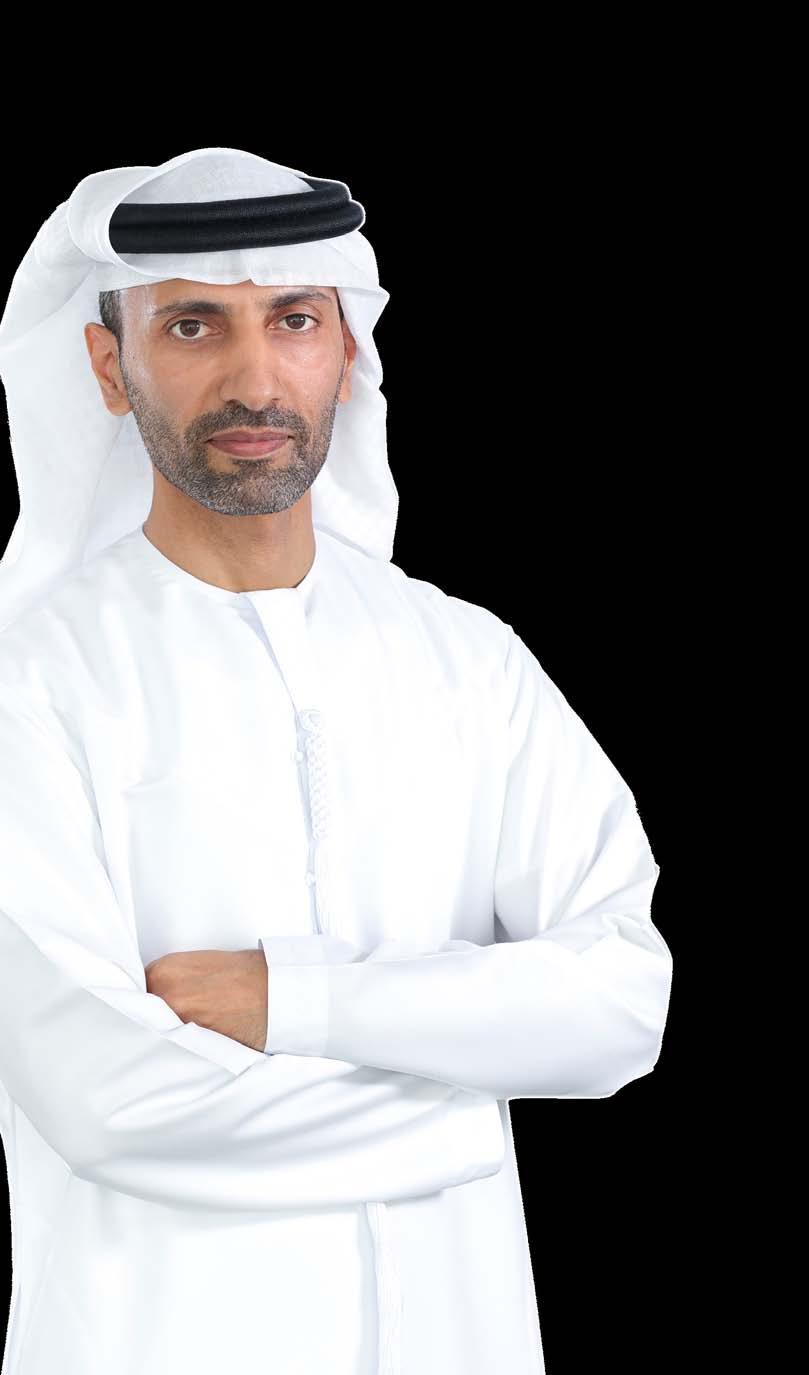

Cover Story 24
Recently, in a press release, H.E. Mohamed Ali Al Shorafa, Chairman of the Abu Dhabi Department of Economic Development (ADDED) said:
“The Abu Dhabi economy continues to reap the benefits of the effective policies guided by the wise leadership to strengthen the pillars and foundations of the economy, maintaining a competitive performance while attracting investments with more initiatives to achieve the strategic objectives of Abu Dhabi.”
Exchanging Oil for new Scope
Abu Dhabi Securities Exchange (ADX) was established on November 15 2000 by Local Law No. (3) Of 2000, the provisions of which vested the market with a legal entity of autonomous status, independent finance and management. The Law also provided ADX with the necessary supervisory and executive powers to exercise its functions. On the 17th of March 2020, ADX was converted from a “Public Entity” to a “Public Joint Stock Company PJSC” pursuant to law No. (8) of 2020. ADX is part of ADQ, one of the region’s largest holding companies with a broad portfolio of major enterprises spanning key sectors of Abu Dhabi’s diversified economy.
ADX is a market for trading securities; including shares issued by public joint stock companies, bonds issued by governments or corporations, exchange traded funds, and other financial instruments approved by the UAE Securities and Commodities Authority (SCA).
ADX is the second largest market in the Middle East and its strategy of providing stable financial performance with diversified sources of incomes is aligned with the guiding principles of the UAE “Towards the next 50” agenda. The national plan charts out the UAE’s strategic development scheme which aims to build a sustainable, diversified and high-value added economy that positively contributes to the transition to a new global sustainable development paradigm. With a market capitalization of more than AED 2.6 trillion (USD 725 billion) as of 5th December 2022, and 135 listed securities, it is the second largest market in the Middle East. The Exchange’s benchmark index, FADX15, reached a new high with 10,500 points for the first time in ADX’s
history.ADX recently won ‘Best Trading Securities Exchange - MENA 2022’ and ‘Best Trading Derivatives Exchange - MENA 2022’ awards from World Business Outlook. These awards reinforce the successes of the Exchange in achieving several key milestones over the last 2 years. Since the launch of its new strategy at the beginning of 2021, ADX has witnessed a robust listing pipeline and took measures to drive the sustainable growth and enhance market liquidity, which has more than doubled the exchange’s market capitalization. ADX has also launched several innovative new products and services, including the introduction of a derivatives market.
Deriving New Trade Standards
ADX, the award winning exchange, recently revealed that in the first year since the launch its derivatives market achieved AED 1 billion in traded value. In these inaugural 12 months (launched in November 2021), ADX traded over 1 million contracts, 100 percent more than other MENA markets in the region. The Exchange launched with an initial five single stock futures: Etisalat, First Abu Dhabi Bank, International Holding Company, ADNOC Distribution and Aldar Properties. This was followed in June 2022 by the launch of futures contracts on the FTSE ADX 15 (FADX 15) Index, which is one of the best performing indices in the MENA region. In October of this year, ADX added another 5 single stock futures bringing the total number of traded derivatives to 11. ADX’s derivatives market was introduced to provide traders and investors with two-way market exposure, while providing for hedging and leveraging capabilities. It has rapidly become one of the most active in the MENA region due to a blend of strong partnerships and world class infrastructure. It uses central counterparty clearing (CCP) to promote clearing efficiency, stability, and confidence in the market. In addition, market makers continue to provide liquidity, facilitating an efficient and orderly derivatives market.

Cover Story 25
Deriving New Trade Standards
ADX, the award winning exchange, recently revealed that in the first year since the launch its derivatives market achieved AED 1 billion in traded value. In these inaugural 12 months (launched in November 2021), ADX traded over 1 million contracts, 100 percent more than other MENA markets in the region. The Exchange launched with an initial five single stock futures: Etisalat, First Abu Dhabi Bank, International Holding Company, ADNOC Distribution and Aldar Properties. This was followed in June 2022 by the launch of futures contracts on the FTSE ADX 15 (FADX 15) Index, which is one of the best performing indices in the MENA region. In October of this year, ADX added another 5 single stock futures bringing the total number of traded derivatives to 11. ADX’s derivatives market was introduced to provide traders and investors with two-way market exposure, while providing for hedging and leveraging capabilities. It has rapidly become one of the most active in the MENA region due to a blend of strong partnerships and world class infrastructure. It uses central counterparty clearing (CCP) to promote clearing efficiency, stability, and confidence in the market.


“We are continually working on introducing new products on our derivatives platform and expect trading to expand further in the coming months, as ADX continues to be a vibrant trading hub for both investors and issuers.”
26 Cover Story
Saeed Hamad Al Dhaheri, Managing Director and Chief Executive Officer of ADX
In addition, market makers continue to provide liquidity, facilitating an efficient and orderly derivatives market.
2022 also saw the value of ADX’s Exchange Traded Funds (ETFs) surpassing AED 1.6 billion year to date, with more than 14,000 trades of 273 million units, positioning it as the most liquid in MENA region. This milestone reinforces ADX’s position as a leading regional ETF hub, offering investors diverse investment options, including Sharia-compliant and geographically diverse funds. Since its initiation in November 2020, ADX currently holds eight ETFs including the newly added Chimera FTSE ADX 15 ETF

To support the increased demand for passive strategies and support the exchange’s derivatives market, this year ADX partnered with FTSE Russell to create a suite of indices. Launched in March 2022, the FADX 15 selects companies by free float adjusted market capitalization and median trading value, while the FTSE ADX Growth Market Index (FADGMI) was introduced in the third quarter. In June, the exchange also introduced FADX 15 futures to provide a new way
In a recent press release, H.E. Rashed Abdul Karim Al Balooshi, Undersecretary of ADDED, said:
“The vital performance of the Emirate’s economy over the last few years resulted in remarkable growth rates in the non-oil sectors during the first half of 2022, reflecting a competitive outlook of Abu Dhabi’s business ecosystem. Abu Dhabi implemented economic programs in recent years to facilitate the establishment and operation of new businesses across the Emirate, giving the necessary factors that can stimulate growth in various sectors.”
for investors to facilitate risk management during periods of market volatility.
Speaking on the day of the achievement, Saeed Hamad Al Dhaheri, said, “Reaching this new milestone on the exchange’s ETF market demonstrates the success of the ADX strategy in diversifying our suite of investment products available to investors on the exchange. ADX is committed to enhancing market efficiency and sustainable growth. The ADX ETF market is a testament to our commitment to be the exchange of choice for issuers and investors.”
Promising the Future of Trade Arab bourses like the ADX have the ability to innovate and introduce an increasingly diversified set of investment opportunities that give it a unique position in the GCC region. ADX is continuously evolving Abu Dhabi’s capital markets to match the needs of the global markets and aims at encouraging the listings pipeline, enhancing corporate governance, and introducing new products and services that meet the requirements of issuers and global investors.
Cover Story 27
Energy Bar Market,

According to a new report published by Allied Market Research, titled, “Energy Bar Market by Type, Nature, and Distribution Channel: Global Opportunity Analysis and Industry Forecast, 2021–2028,”

The energy bar market size is expected to reach USD1,010.9 million by 2028 at a CAGR of 6.4 percent from 2021 to 2028. An energy bar is a healthy snack bar made up of nutritional ingredients that are designed to increase energy and endurance. The main feature that sets it apart from other protein and snack bars is its high carbohydrate and sugar content, which contributes to its high energy value.

One of the key factors driving innovation in the food & beverages industry is the rapid evolution of consumer preferences. At present, the current energy bar market trends indicate that the demand for energy bars is expected to grow at an impressive rate in the coming years, owing to the steady rise in number of health-conscious people around the world as well as growing awareness about the benefits of energy bars.
Attributed to the fast-paced lifestyle, particularly in urban areas around the world, an increasing number of consumers are turning toward on-the-go products to meet their nutritional needs. As a result, energy bars have become increasingly popular in recent years.
globally, worth USD 1,010.9 million, by 2028 at 6.4% CAGR
Energy 28
Furthermore, over the last decade, a large number of players have gradually entered the global energy bar market, resulting in the availability of energy bars with a variety of flavors, sizes, and nutritional content through various distribution channels. Another factor that has contributed to the popularity of energy bars in recent years is digital boom as brands continue to promote their products through online sales channels such as social media, newsletters, and e-mail marketing. While the global energy bar market remains competitive, market players are expected to focus on packaging, pricing strategies, and marketing strategies to gain a competitive advantage in the current market landscape.
Numerous players have entered the global energy bar market, recognizing the growing energy bar market demand around the world. While conventional energy bars continue to attract new customers, several brands are increasingly focusing on catering to consumers with niche preferences, such as gluten-free and plant-based products, in the current market. For example, one of the brands recently launched a new line of energy bars in various flavors such as blueberry, banana, and mango. Several brands are increasingly focusing on improving the nutritional content of their products by incorporating high-nutritional-content ingredients.
The energy bar market
segmentation is done on the basis of type, nature, distribution channel, and region. On the basis of type, the market is categorized into protein bar, nutrition bar, cereal bar, and fiber bar. As per nature, it is divided into organic and conventional. According to distribution channel, it is fragmented into hypermarkets & supermarkets, convenience stores, specialty stores, and online sales channel. Region-wise, the energy bar market is analyzed across North America, Europe, Asia-Pacific, and LAMEA.
Various types of energy bars available in the market include meal-replacement bar, whole food bar, oat bar, and endurance bar.
By type, the protein bar segment was the highest revenue contributor in 2020 attributed to the fact that to stay fit and healthy in daily lives, consumers are increasingly turning to weight management and energy products such as protein bars. By nature, the organic segment held the largest market share as the growing awareness of various health effects of artificial additives, such as color, flavor, sweeteners, and preservatives, has fueled the demand for an organic energy bar. Depending on the distribution channel, the specialty stores segment led the market, owing to the availability of a large variety of energy bar in these stores.
Manufacturers use smart labeling on their products to conceal

the presence of high calorie or sugar levels by mentioning fortified or added functional ingredients/elements found in confectionary bars. To eliminate the general perception of health risks associated with the consumption of confectionary bars, it is expected that manufacturers will work to incorporate functional ingredients/elements into their final offerings to gain consumers and increase their energy bar market share.
Product launches are expected to decrease the effect of specific diseases such as diabetes and indigestion. Some major manufacturers have already begun to offer products in specific wellness categories such as digestion enhancement, diabetes-friendly products, and cognitive enhancement. During the forecast period, this trend is expected to take central position and gain significant momentum in the rapidly expanding functional food market as well as significant brand equity.
Restriction is also imposed by stiff competition from other types of energy bars. Other constraints include lack of flavor and high sugar content in many energy bars, which forces consumers to rethink energy bars as a healthy food product. Furthermore, fitness clubs’ marketing campaigns promoting energy bars as a meal replacement have boomed energy bar sales.
Energy 29

AsiaPay: Adopting latest technologies in Market-Led Innovation to Become Singapore’s Leading Digital Payment Service Provider Fintech 30
The year 2022 saw the rise in the popularity of biometric authentication, code-based security points and mobile point of sale. Some of the major players in the fintech industry from Asia are making foray into incorporation of Artificial Intelligence and Machine Learning while Blockchain technology remains the favourite buzz word across the globe. Innovative digital payment solutions have attained a new level of popularity in this post-Covid period, leading to many startups in this sector.
World Business Outlook recently announced AsiaPay as ‘Best
Digital Payment
Service Provider’ in Singapore and the ‘Best Digital Payment Partner’ in Hong Kong. AsiaPay is a leading digital payment service provider in the Asia region. With one of the widest network of partners, including Visa, Rupay, MasterCard and more, AsiaPay’s app is fully equipped to handle all kinds of digital payments with one of the highest grades of security features. AsiaPay operates from 13 offices in Asia Pacific including Australia, China, Hong Kong, India, Indonesia, Vietnam, Singapore, Malaysia, Taiwan, Thailand and The Philippines. It provides integrated multi-channel digital payment processing solutions and services to banks and e-businesses covering credit
a nd debit cards, bank account/net banking, digital wallets, buy now pay later, over-the-counters, prepaid cards, and crypto payments and more.
Ujal Nair, Editor of World Business Outlook, interviewed Ernest Lo, COO of AsiaPay, to learn more about the company’s innovative products and services and its approach to technology among other topics. Innovations play a crucial role at every step of AsiaPay’s journey. To support the continuous growth in business, AsiaPay has put a lot of emphasis on two areas –Technology Adaptation and Product Innovation.
The Web 3.0 Strategy
As a leading digital payment solution and technology provider in the Asia Pacific, AsiaPay works closely with our partners in the metaverse and NFT-related businesses. With the capabilities on the web3 payment, we aim to strengthen the sales scene, use

Fintech 31
virtual social space as attraction, product display, and sales as a reality, and enhance the interest and purchase intention of potential buyers, coupled with cryptocurrency-led payment.
AsiaPay is helping its various merchants to embrace the new experience of selling, socializing, and making money while playing in the post-Instagram era. Another announcement from the AsiaPay camp in June this year brought word of a new partnership in the field of token-based economics.
Moonland Metaverse, a world for NFT collectors and meta businesses, enables merchants to enhance their user experience by plugging their business into the metaverse and tapping into digital-first users to increase their brand image and sales channels.
Adopting New Payment Trends


The payments space was incredibly robust across the Asia Pacific region in the first half of 2021, and the BNPL space was found to be one of the fastest-growing subsectors. “The pandemic has not only adversely affected businesses but also consumers’ disposable income. As a result, with the rising demand for consumer financing and the growth in eCommerce sales, BNPL services have emerged as a major new payment method and short-term credit facility for consumers,”
Ernest explained. “At AsiaPay, we are partnering with most of the popular BNPL service providers to increase the potential of BNPL service adoption and gain access to a wide range of merchants currently using our digital payment solutions.”
One Single Integration for All
“To win today’s eCommerce battlefield, you must analyze every part of your customer journey to ensure the user experience you offer your customers is flawless, especially the check-out. “Ernest explained. “To make adding payments to your e-store and website as easy and frictionless as possible, you should invest in the right digital payment tools. By using AsiaPay’s payment gateway, PayDollar, which allows you to add payment options and widgets without any hazzle, you can give your customers exactly what they want in minimal time (and with maximum success)— allowing you to focus on other important areas of your business as your sales grow.” In Singapore now, we support over 7 different BNPL & eWallets payment methods, Crypto Payment acceptance, and China Payments in one single integration with the PayDollar platform.
Security Is Always Our Priority
In this highly competitive and
fast-changing business environment, the ability to make more effective use of data will set its business apart from other players in the same industry. Ernest explained. “Being a digital payment service company in Asia Pacific, we process tons of payment transactions for merchants and banks in every minute via online and mobile from credit cards to net banking, from wallets to QR. etc. On the security front, we ensure the data handling process complied to the highest industrial standard such as PCI level 1 since 2006. And also, we make use of anti-fraud processing to protect our clients from unnecessary fraudulent losses.
A Glimpse of Future
AsiaPay continuously grows by seeking for further product, market expansions and stronger partnerships with its integrated payment features and solutions. In the meantime, we will continue to bring advanced, comprehensive, integrated, and secure services to Asia Pacific.
Fintech 32

Fintech 33
- Jerry Tse CEO of Eddid Financial
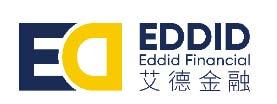

We are evolving our technology for the evolving global markets
Fintech 34
While in the 19th century, fintech was about telegraphs and Morse codes, the present phase of digitalization came up with the establishment of ATM machines in the 1960s. The ease of access to internet has made the industry an inevitable aspect of modern economics. With over 6200 fintech startups in the APAC region, the APAC market is poised to grow up to USD 178 billion by 2026. This will be majorly driven by the payments, personal finance, credit services, insurance, wealth management and other such services.
Today, digital payment solutions and BNPL are taking the fintech industry by storm with large and small scale credit firms joining the fray. With a population of over 3 billion and a GDP of more than USD 5 trillion, the Asian fintech industry is currently the world’s largest and the fastest-growing regions in the world.

World Business Outlook spoke to Jerry Tse, CEO of Eddid Financial, one of the fastest growing fintech firms in the world, to understand how exactly the Asian fintech industry is growing and how the main players of the fintech industry are working towards
the growth of the fintech industry. Eddid Financial is a Hong Kong-based new generation online brokerage firm. Members of Eddid Financial hold multiple types of licenses in major financial markets such as Hong Kong and the United States.
Since its establishment in 2015, Eddid has successfully obtained Type 1, 2, 3, 4, 5, and 9 regulated activity licenses from Hong Kong Securities and Futures Commission. Being a participant of the Hong Kong Stock Exchange, Eddid is a trading service platform for Hong Kong stocks, US stocks, Hong Kong futures, foreign exchange, asset management, mutual funds, unit trust funds and stock-linked high-interest notes and other investment products. Its portfolio of personalized investment solutions includes stock financing, IPO subscription, margin financing and securities lending.
During this exclusive interaction, Jerry shared his insights about the challenges and opportunities for the Asian fintech players, the technology in demand, the solutions that apply, the trends to look out for and more.
Fintech 35
From a global perspective, what is the role of the Chinese investors and investments?
Chinese investments and the Chinese investors are basically not that active currently in the global market. The regulations on the Renminbi are so tight that offshore investors require approval from the ministry of foreign exchange. In spite of an economic slowdown, the Chinese government is encouraging on-shore investments rather than off-shore ones. One Belt and One Road related countries are being given the preference while no investments have been reported in other parts of the world from China.
China needs to be very cautious with respect to managing respective industries to make sure that the financial sector will not be significantly affected by the low or poor performance of these respective industries. Many of the local governments in China are reportedly raising debts by issuing bonds to support the growth and daily necessities of respective provinces or cities. Reports of defaults in these bonds further dent the confidence of the investors. The Chinese government needs to move on from relying on the domestic markets for the growth of its GDP and embrace a more open post-pandemic market.
How are the fund managers managing the current global market scenario?
The fund managers are finding it difficult to raise money, especially for long-term investments. It is reported that many of the funds are showcasing poor performance, some even defaulting, leading to legal issues. Many of the IPOs today are experiencing sub-par performance on the day of the opening itself.
This short-term global economic turmoil is actually favouring some of the cheap and high-potential assets, attracting aggressive investments. The Hong Kong market is witnessing many IPO projects being issued at a very low and attractive price. The market is already at its lowest threshold and soon the only direction to move would be up. In this sense, the fund managers can actually look forward to a bright promising market in the coming days.
What is Eddid Financial Group’s current line of action for the current global market scenario?

At present, the market is in a very volatile situation. Eddid Financial is trying to differentiate itself from other players in the market through its diversified and interesting products and services. In addition to some of the traditionally popular investment products, the financial group is also setting

Fintech 36
up its own indigenously customized funds and products, with industries and assets suitable for the majority of the investors.
Eddid Financial, being a pure Fintech firm, has developed its platform, Eddid One app, using its in-house team that comprises a team of around 150 people. We are demonstrating the true potential of our systems and plan to sell them to securities houses, as a white label. The platform could act as a comprehensive trading interface.

Artificial Intelligence is another megatrend where a lot of investments are pouring in from the financial markets. Eddid is looking to replace the conventional setup where the share price monitoring, especially for the commodities market requires 24-hour manual monitoring. Eddid has developed its own AI and algorithm to monitor and analyse the market and the trades. In risk management, for instance, the risk managers can incorporate the AI system to keep tab of the share prices every day and do the margin call every day, every hour. Today, AI is very popular in the financial market, especially for commodities and investment banking.
What
are
the standout features of the Eddid One App?
Eddid One App is a one-stop shop for all the needs of retail investors and a perfect showcase of our fintech business. The platform is developed to cater to various investors, including the US and other foreign exchange and futures. The app is developed and regularly maintained by Eddid’s technical team. With over 500,000 registered users, Eddid One still has a large market to tap.
What is the potential of the virtual asset management platform in Asia?
Cryptocurrencies are going through a very tremulous phase. However, there is still a large portion of the populace around the globe who trust virtual assets or cryptocurrencies more than their own national currency. The popularity of these virtual assets is most prevalent in Russia, Ukraine and some South Asian countries like Cambodia and Vietnam. Its lenient regulations and decentralized and democratized nature has attracted even the conventional traders and investors. Many of the bulge bracket houses like Morgan Stanley, Goldman, JP Morgan, are developing their own teams and putting in resources and efforts for developing their virtual management businesses.
The usually conservative China is much more receptive for this industry, with the likes of Alibaba and Tencent. Virtual assets is surprisingly attracting a lot of the traditionally conservative players in the market who are tapping into new opportunities. We are also developing some of our alternative businesses like crypto and other safe, structured products in respective countries like Cambodia, Vietnam and more.
Fintech 37
Eddid Financial had its humble beginnings from the mainlands of China, where it developed its online businesses and online brokerage services. However, due to a major overhaul in the Chinese policies for offshore financial service providers, the Hong Kong-based financial group has undergone a major change in its strategies. Eddid is currently focussing on its offline base in China with institutional businesses and its own fintech products for China.
We have comprehensive retail and institutional businesses and licenses in the US. We completed our first US IPO around 2 weeks ago, where we were the stabilizing agents. We plan to repeat our success in Canada as well. Extending beyond China, Hong Kong and other Asian regions, we are tweaking the Eddid One app to cater the international users.



What are the long-term goals that Eddid Financial group is tapping into for the Chinese as well as the global markets?
Fintech 38
How do you forecast the future of the fintech industry?
In recent times, many tech companies are claiming to be ‘Fintech’ with short-term research and investments.
We are looking at it from a long-term perspective with heavy R&D investments and a large-sized team. Eddid has invested over four years and over USD 50 million for the now popular fintech platform.
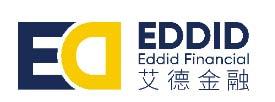

Many countries are providing a conducive ecosystem for fintech to grow. However, the industry still lacks the required expertise from across the globe. The main challenge with most of the fintech across the world is that they develop the technology without understanding the market completely. We see securities platforms being developed without being in sync with the latest available opportunities in the market and advisory from the government.
We have set up our fintech team with expertise in not just the technology for the platform but also the needs of the market and the convenience of the target users. A fintech team needs to be consistently in touch with some of the top market professionals.
The market keeps evolving with new evolutions in technology. Eddid, as a fintech company, is always looking into ways in which we stay ahead of the market expectations. Fintech firms should be exploring ways to cope with the real problems of the market and come up with the most precise solution possible.


Fintech 39
Exclusive Interview by Ujal Nair
An increasing number of Americans are looking for financial emancipation by seeking solutions outside of US borders. As the American Government tightens the noose around wealth through the new proposed tax reform, those who worked their entire lives amassing their assets are left to ponder whether holding on to the American passport is actually worth it.
In many cases, the answer is that it isn’t. Record numbers of Americans are renouncing their citizenship, but they need to obtain a second one so they aren’t left stateless. Some are already dual citizens, but those who don’t have a second home are steering towards the Caribbean nation of St. Kitts & Nevis, a small Commonwealth country that offers its citizenship in exchange for an affordable investment in its economy.
The US, long labelled as the holy grail of immigration, and home to the American Dream, is not what it used to be. The American Dream turned out to be shackled
by a complex – and exhausting –tax regime, while financial privacy in the US is near extinction.
The American Foreign Account Tax Compliance Act (FATCA) has been a thorn in every American’s side living outside of the US. Complex tax return filings and debilitating tax rates have left Americans abroad reeling. No one likes paying taxes, but people expect something in return when they do. Those living abroad are hardly getting the bare minimum in return for their taxes, making it no wonder why many of them, especially those living in tax-friendly nations, are looking to relieve themselves of the massive tax burden.
Situated in the Caribbean, St. Kitts & Nevis is already popular among the American elite as a touristic hotspot full of luxurious resorts and unmatched natural beauty. But the most intriguing allure of St. Kitts & Nevis is its citizenship by investment program, which has seen a massive influx of American applicants in the past couple of years.
Starting at 150,000 USD investment for a single applicant, an applicant with a clean criminal background can become a citizen of St. Kitts & Nevis within a few months.

The country’s passport, which provides visa-free travel to 157 destinations worldwide, including the UK, EU, and Singapore, is one of the best in the world.
For Americans looking to escape the USA’s massive tax burden, the St. Kitts & Nevis passport offers a good alternative in terms of global mobility but goes beyond that in what it offers in terms of financial emancipation.
The Caribbean country does not impose wealth, capital gains, or inheritance tax. More crucially, it does not tax its citizens based on their citizenship status, rather their status as tax-residents. This means anyone who does not spend more than six months a year in St. Kitts & Nevis is not taxed on their worldwide income. The lack of capital gains and
Finance 40
Caribbean nations provide solution to Americans’ taxation & financial privacy issues
wealth tax in St. Kitts & Nevis is extremely interesting, especially now since the US government is looking into nearly doubling capital gains tax while gifts and estate tax may rise a staggering 62percent.
Hence, St. Kitts & Nevis offers a robust alternative for the American elite to safeguard their assets against ludicrous tax rates. But it isn’t just about the taxes; it is about the entire financial framework in the Caribbean country.
Nevis also has a great setup for asset protection tools, such as offshore bank accounts and offshore trusts, which are legal tools one can use to protect their wealth.

Another reason Americans are flocking to St. Kitts & Nevis is the crypto-friendly nature of the country.
American cryptocurrency investors are finding it harder and harder to maintain their investments, as their nationality can be a hindrance in important coin offerings or mega crypto deals.
Bitcoin investor, to its shores.
Roger Ver gained a St. Kitts & Nevis citizenship through investment a few years back and has been living his life worry-free on the islands. He even claimed in a recent interview that not having to file tax returns, even if he did not have to pay anything, was one of the greatest feelings in the world due to the complexity of the tedious, time-consuming process.

Nevis, in particular, has a robust financial services sector that is highly exclusive and extremely private. People will still announce their assets and income to the government to maintain their legitimate standing, but the public, especially foreign creditors, will find it near impossible to gather information about a Nevisian bank account or LLC except what the owner wants to divulge. This gives the wealthy more privacy in a world dominated by social media and a lack of confidentiality.
But it isn’t just the challenging investment landscape, as the IRS is trying to crack down on cryptocurrency and is taxing cryptocurrency gains as it would stocks or bonds.
St. Kitts & Nevis does not impose capital gains tax, so that is an important point. But the overall perspective of the St. Kittian government towards cryptocurrency is what draws the likes of Roger Ver, maybe the most influential
Crypto investors like Roger will find a country that is welcoming towards cryptocurrency in St. Kitts & Nevis, as most of its banks deal with cryptocurrency investors, Bitcoin ATMs can be found throughout the nation, and the government is even part of the first union to launch an official digital currency dubbed D-Coin.
Finance 41



42
UAE Financial Markets association signs partnership agreement with ICMA Finance
The UAE Financial Markets Association (UAE FMA) has signed a cooperation agreement with the International Capital Market Association (ICMA) to boost their cooperation and mutual membership as well as to exchange expertise and information on regulatory developments and international best practices in the financial markets sector.
Under the newly signed
agreement, both parties will coordinate their efforts to design educational training programs, prepare analytical reports for financial markets, read advanced data, and explore opportunities to improve automated trading technology.

They will also cooperate in effective trading practices, clearing and settlement procedures, and
will also work together to share their expertise and experience, with the ICMA briefing the other side on its global financial markets experience.
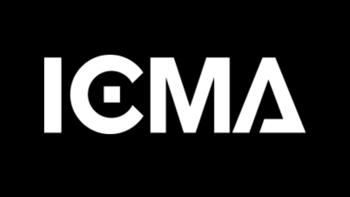

Finance 43
Mohammed Al Hashemi, Chairman of UAE FMA, and Bryan Pascoe, CEO of ICMA, signed the partnership agreement, in the presence of a number of senior officials from both sides.
Expressing his happiness with the promising partnership, Al Hashemi stressed that the agreement comes in line with the UAE FMA’s keenness to expand its network of influential strategic partners with extensive experience in the global financial markets, adding that it will help the association’s members gain new experience and will provide them with the skills and knowledge they need to do business in the global financial markets, while also broadening the scope of investment opportunities for both sides.
Al Hashemi said that the agreement will positively reflect on boosting local investment opportunities and drawing in further foreign capital thanks to the association’s crucial role in giving partners a thorough and integrated view of the capital markets in the GCC countries, thus expanding its operations in cross-border markets and broadening its scope of work beyond local markets.

For her part, Ohoud Al Ali, board member of the UAE Financial Markets Association, emphasized that the UAE FMA looks forward to keeping the influential partners up to date with the latest investment prospects offered by the UAE financial markets, which are provided based on a package of flexible legislative regulations, in addition to briefing the association’s members on partners’ extensive experience and skills.
Bryan Pascoe, on the other hand, underscored that the UAE is one of the best destinations for capital looking to invest in its various sectors, especially in financial markets, now that it offers a safe haven for all types of investments, as evidenced by the rising growth in various sectors. “The agreement will undoubtedly contribute to strengthening the ICMA’s relationship with UAE FMA and expanding the frontiers of joint collaboration to create investment opportunities and bring about greater qualitative leaps in the regional financial markets,” Pascoe said.
Meanwhile, the UAE FMA co-hosted yesterday (Wednesday) a conference entitled, “Dynamics and Developments in International Repo Markets-A Lens on the Middle East and North Africa” in the presence of the International Capital Markets Association.

The conference featured a series of interactive panel discussions with stakeholders in the local market who discussed opportunities and challenges that repo and guarantees face in the global financial market as well as related opportunities in the Middle East and North Africa region.
The conference kicked off with a presentation by Alexander Westphal, ICMA director, market practice and regulatory policy, in which he addressed the main trends of repo in European markets as well as the settlement system, its efficiency, sustainability, and digitization of buyback.
The conference also featured a presentation by Rahman Janjua, Credit Repo and Secured Financing, First Abu Dhabi Bank, titled “Global and Regional Repo Market Trends,” in which he spoke about regional developments and applications of repo, crucial control points, automation, Islamic repo, and financing versus balance sheet management.
While the second panel discussion focused on automation, digitalization, and legal technology in the financial market sector, another session, in which Dina Saudi, Senior Associate Director of ICMA, participated, covered legal opinions and business, associated advancements like the categorization project, and legal technology.
Finance 44

Finance 45
Indians and Indonesians are the happiest group of people - GFK study

Insight 46
GfK’s Consumer Trend Study

2022 report studied the issues that concerned consumers in Southeast Asia, India and Taiwan. These matters will be discussed at the “GfK Insight Summit 2022: Winning the new consumerism in APAC” to be held on August 18, 2022.
In the post COVID-19 era, understanding the forces that impact consumer attitudes and decisions and its effect on businesses is essential as the forces of supply chain challenges, conflict, climate change and soaring inflation, energy and oil prices loom ahead. Helping consumers pursue their vision of a better life, involving material products such as nice clothes or intangibles like health and leisure would ease their navigation in an uncertain and volatile world.
“A new world has emerged. Consumers across the Asia Pacific are adapting and recovering to a new consumerism order amidst global unrest and heightened economic pressures alongside newly adopted consumer choices and behaviours. And therefore, to better understand how to succeed in a rapidly changing environment, organisations need to pivot their strategies with agility.
The key is to be ‘fluid’ in your market approach. During GfK Insight Summit, industry leaders will take a fresh look at winning the new consumerism in the Asia Pacific.” said Karthik Venkatakrishnan, Marketing & Consumer Intelligence, APAC Lead, GfK.
Confidence shifts vary across markets
According to the GfK Mood of the World Study, people reported feeling happiest in India and Indonesia at 29 per cent and 23 per cent respectively, aligning with their upbeat mood in other aspects. Optimism on the future is more prevalent in developing markets, while in developed markets, people tend to be equally divided in their opinions.
Singapore is the second most optimistic nation concerning the country’s economy improving within one year at 38 per cent, followed by Malaysia at 27 per cent, Taiwan at 17 per cent and Thailand at 15 per cent. Regarding the uplifting of their personal economic situation in the upcoming 12 months, Singapore and Malaysia equalised in second place at 58 per cent, followed by Taiwan at 54 per cent and Thailand at 41 per cent.
Inflation and high prices are a major concern for Asian consumers
Inflation and high prices are the primary concern in Singapore and Taiwan at 70 per cent, Malaysia at 56 per cent and Philippines at 52 per cent, the second highest concern in Thailand at 52 per cent, with the top concern being recession and unemployment at 53 per cent.
Asian consumers emphasise family, authenticity and honesty as their key personal values
Protecting the family deemed most important in Malaysia, Philippines and Thailand, while placed in the second and third highest ranks in Singapore and Taiwan respectively. Authenticity is of third most importance in Philippines and Thailand, fourth in Malaysia and fifth in Singapore and Taiwan, while honesty is the second highest ranking in Malaysia, Philippines and Thailand, and the third highest in Singapore and eighth in Taiwan.

Insight 47
Will rising costs hurt the insurance industry in APAC?
Latest YouGov data sheds light on how consumers in Australia, China, Hong Kong, India, Indonesia and Singapore expect to adjust insurance spending.
The pandemic changed the perception of insurance as more individuals felt the need to be prepared for unforeseen situations. But with cost of livins on the upswinq, will the insurance sector suffer a setback? In a recent survey, YouGov asked consumers across
18 markets the first areas they would make cutbacks if household budget were squeezed due to an increase in cost of living.
Looking at the results across APAC, one in six consumers said they would cut back on insurance policies or premiums (15%), comparable to the global average (also at 15%). Having said that, insurance is still considerably resistant to cost of living increases,

Insurance 48
while eating out (56%), travel (51%) and clothing (44%) top the areas of spending consumers would cut back on to reduce household expenses.
Comparing the APAC markets, the highest numbers came from Australia, with almost one in five saying they would cut back on policies or premiums (18%). Hong Kong and India had similarly high figures, at one in six (16% for Hong Kong; 15% for India).
Those in Singapore and Indonesia appear slightly less resistant to cost of living increases, with just one in eight looking to cut back on insurance in the wake of higher costs (12%).
Breaking down the data according to age, adults in APAC aged 35-44 are most likely to say they will make cutbacks on insurance (16%). In Singapore, the scenario is reversed, with consumers aged

35-44 one of the least likely to cut back on insurance (10%), as compared to their older counterparts aged 45-54 (15%) and above 55 (14%).
Methodology:
YouGov RealTime Omnibus provides quick survey results from nationally representative or targeted audiences in multiple markets. The data is based on surveys of adults aged 18 and over in 18 markets with sample sizes varying between 508 and 2,065 for each market. All surveys were conducted online in May 2022. Data from each market uses a nationally representative sample apart from Mexico and India, which use urban representative samples, and Indonesia and Hong Kong, which use online representative samples. APAC data is based on a sample of 5,675 adults, of which 1,055 are from Singapore. Learn more about YouGov RealTime Omnibus.

Insurance 49
Singapore Property investments to surpass USD 30 billion in 2022: Reports

Real Estate 50
With Singapore’s economy in a position of strength, being forecasted to surpass pre-pandemic average annual growth numbers by growing 3.8% year-onyear in 2022, Cushman & Wakefield’s latest Singapore Market Outlook H2 2022 report expects the overall Singapore property market to see relatively strong but slower growth as investors seek out safe havens for wealth preservation and diversification amidst global uncertainties.
“Singapore starts from a position of strength and economic indicators reflect growth and stability. Consumer spending remains robust and is expected to grow as inbound tourism recovers, while the labour market is staying healthy with low unemployment rates and recovering wage growth. The high levels of fixed asset investments into Singapore in 2020 and 2021 also suggest that Singapore could benefit from a flight to safety as capital gravitates towards ‘safe havens’,” said Anshul Jain, Managing Director, India and Southeast Asia at Cushman & Wakefield. “Against this backdrop, we still see relatively strong growth for the overall Singapore property market in H2 2022, albeit at a slower pace.”
“Assuming interest rates remain high into 2023, property demand is expected to slow as companies adjust to the impact of these higher rates. However, we remain sanguine that the property market in Singapore could see resilience given current tight supply conditions across the board. Property rents and prices for grade A offices and prime logistics are still expected to see inflation-driven growth, and repricing opportunities for these could be limited as asset owners’ holding power remains strong. Rents are largely still expected to grow and
support capital values,” said Wong Xian Yang, Head of Research, Singapore at Cushman & Wakefield. “Nonetheless, if interest rates remain high into 2023, transaction volumes could cool as the expectation gap between buyers and sellers widens.”
Office
The Singapore office market remains on an uptrend, supported by the return-to-office momentum and pick-up in business activities. CBD Grade A and Grade B office rents are poised to grow by 5.4% and 2.7% y-o-y respectively for the whole of 2022 amidst a tight supply situation, while decentralised office rents are expected to grow 3.2% y-o-y for 2022. Rental growth could slow in 2023 as occupiers become more cautious and some struggle to adapt to higher interest rates.
Overall, office demand remains positive with CBD Grade A office vacancy rates expected to tighten towards 4.5% by end-2022. Vacancy rates are expected to rise in 2023, with increased supply due to the expected completion of Central Boulevard Towers. However, future supply remains tight with a limited CBD Grade A office supply pipeline and programmes like the CBD incentive scheme possibly prompting more redevelopments.
Industrial
Rent growth is expected to continue across the industrial market in 2022 as Singapore’s economic reopening and stable growth continues to drive demand. Overall, industrial vacancy rates have tightened to around 10.2% in Q1 2022 compared to 10.8% in Q4 2019.
Fit-for-purpose assets which can capture demand from prevailing megatrends such as e-commerce, business digitalisation and life science growth will continue to see higher demand and rental growth. Given current supply chain disruptions, stockpiling demand will persist but may fade slightly towards 2023 as supply chains adjust and consumer spending diverts from goods to services. Conventional factories and outlying business parks will see slower rental growth due to muted demand as occupiers
Real Estate 51
seek newer developments with better specs and amenities. Average annual rental growth rates are expected to be 3.2% and 2.1% y-o-y for the industrial market in 2022 and 2023, with stronger growth prospects for new economy assets.
Retail
Prime retail rents have started recovering in 2022 due to improved pandemic sentiment and border reopening. Demand for retail spaces is supported by improving total retail sales that grew by 9.3% as of May 2022 YTD, with only 14.9% contributed by online retail sales. Prime retail rents are expected to climb 2%-4% y-o-y in 2022, led by the Suburban and Orchard retail markets. Limited new supply will help support rents with new island-wide retail supply only coming up to 0.3 msf per annum from 2022 to 2026.
Despite recovering footfalls, retailers still face challenging operating conditions, especially those in the Food & Beverage (F&B) sector, -a key demand driver of the retail market. Sales of retailers could be impacted by higher operating costs due to manpower shortages, persistent inflationary pressures and food supply disruptions. While the reopening of borders would divert some consumer spending overseas, offsetting some of the gains due to higher inbound tourism.
Private Residential
Private residential sale volumes slowed at the start of the year as buyers adjusted to newly introduced cooling measures amid a dearth of major launches. However, market has slowly adapted to the cooling measures and demand is returning as evidenced by strong sales achieved at the new launches of 407-unit Piccadilly Grand and 298-unit LIV @ MB in May. Thus, sales volumes increased in Q2 2022 by almost 28% q-o-q. Given a limited launch pipeline, new sales volumes for 2022 are forecast to reach

9,000-10,000 units while resale volumes can reach 13,000-14,000 units.
Private residential prices are trending higher due to a tight labour market, rising rents and continued local preference for private property ownership as well as heightened construction costs and low unsold inventories. For the whole of 2022, private residential prices in Outside Central Region and Rest of Central Region are expected to increase by 5%-7% while Core Central Region prices could inch up by 2%-3%.
Investment
Capital continues to flow into the Singapore real estate market with total investment sales reaching USD19.1 billion during the first half of 2022. Barring a significant deterioration in the global economy, 2022’s investment sales volume is poised to reach a three-year high as investors seek to deploy capital into safe-haven assets amidst rising inflation. Office investment sales are dominating total investment volumes while developers continue to show a healthy appetite for residential development sites given rising prices and rents. Industrial deals remain held back by limited institutional-grade industrial stock for sale and government regulations, though we anticipate increasing investment volumes.
There has been little evidence of asset repricing even as interest rates and inflation rise. The weight of capital may keep real estate asset yields stable in H2 2022, but overall transaction volumes could slow in 2023 as buyer-seller price gap expectations widen. With limited repricing opportunities over the short-term horizon, investors with available liquid funds who are willing to take on development risk could reap significant first-mover advantages in the future, especially when capital requirements for development are higher due to rising interest rates and inflation.
Real Estate 52


Real Estate 53
Risk Management in 2022: Mitigating Risks from Nature and Managerial Failure
Kollin Founder and Managing Director of Várri Consultancy

Uncertainty has Become the New Normal
According to the IMF’s World Economic Outlook, global economic growth is forecast to slow from 3.2 per cent in 2022 to 2.7 per cent in 2023. The same report predicts a one-in-four probability that global growth will fall below 2 per cent in 2023.
While the entire world had begun returning to normalcy at the start of 2022, the supply chains were hit by another challenge: the Russian invasion of Ukraine. This was followed by the slow output from China, resulting in rising prices and inflations. The stagflationary economic conditions in the US, China and Europe have further delayed the healing process of the post-pandemic financial scars. A recession seems imminent in several countries, with most significant economies witnessing two consecutive quarters of degrowth. The Federal Reserve recently said the probability of a US recession in 2023 had risen to nearly 50 per cent.
With zero COVID policy, fiscal miscalculations, and prolonged supply chain disruptions, confidence across the financial markets weakened in October. The only short-term respite arose from the expected peak in consumer demand during the festive seasons. A constant state of uncertainty with new and emerging risks has put the focus on risk management practices.
Risk Management 54
Johnny
Preparing for 2023
As we approach the end of 2022, many organisations have begun budgeting and strategic planning for the coming year. Considering the current state of uncertainty, risk management needs to play an essential part in that strategic planning, says Johnny Kollin, Founder of Várri Consultancy.
“Companies and society have started seeing risks and risk management in a different light after experiencing the recent global pandemic,” says Kollin. “Strategic and financial planning is an important aspect of any business. At the same time, companies without a proper risk framework embedded in their organisations, and those without a sound risk culture, run the risk of overlooking all the things that can affect that strategy,” he continues.
The Role of a Risk Management Consultant
Risk management aims to identify risks and assess the likelihood of them occurring and the impact if they occur. By understanding the risks an organisation faces, management can decide the necessary response, for example, by implementing risk controls to reduce the likelihood or the impact. It is a well-recorded deduction that many corporate failings occur due to a lack of management accountability, strategy, and transparency. In these times of uncertainties, where regulators and stakeholders are relaying more demanding expectations, corporates and financial institutions are compelled to opt for better discipline, control, and responsibility.
Engaging an external consulting firm to provide risk advisory services can guide management in their business decision process. In these uncertain times, they can also support management in identifying and analysing alternatives for dealing with such risks and uncertainties. Várri Consultancy has seen interest from both startups and established companies to engage external advisors to either implement new or review existing practices.
Várri Consultancy is a UAE-based independent strategy and risk management consulting boutique. They are known for their timely and accurate consultations for organisations during challenging periods. One example of the companies Kollin refers to is a Dubai-based equity platform that invests in, develops, and operates renewable energy assets in the MENA region. The company engaged Várri Consultancy to conduct an exploratory workshop to identify broad risk themes and create management awareness of the company’s risks. With valuable outcomes from the seminar, Várri Consultancy was hired for a follow-on project to review and improve the company’s existing framework and policies. This credit risk and due diligence framework empowered the client to comply with the latest government regulations and streamline its investment decision-making process.
Várri Consultancy is founded by Johnny Kollin, an expert consultant with over fifteen years of experience in the banking and fintech sectors of Abu Dhabi, Dubai, London, and Stockholm. The company has won two awards at World Business Outlook – ‘Leading Strategy and Risk Management Consulting Boutique in the UAE 2022’ and ‘Leading FinTech Risk Management Boutique in the UAE 2022’. They won the two titles for their keen eye for risk management and strategic precision in delivering expertise. International Business Magazine recently adjudged the firm as ‘Best Management Consulting Startup UAE 2022’ and ‘Best New Boutique Consulting Firm UAE 2022’ for their excellent business consulting services as they possess passion and a drive to achieve high-impact business results.
Risk Management 55
RISK MANAGEMENT

56
RISK MANAGEMENT Risk Management
Risk Advice for Year-End
What are some general tips for organisations to consider as we approach year-end? We asked Johnny Kollin to list the top-3 tips.

1. Increased fraud risk: “The first thing that comes to mind is to be aware of the increased risk of fraud during the holiday season,” says Kollin. “Employees can be more relaxed, and a junior colleague working shifts on Christmas Day may have a higher threshold before they call senior management to alert them of any anomalies.”
2. Close out the current year and prepare for the next: Risk management is, or should be, a continuous process, says Kollin. That said, now may be an excellent time to take stock of the achievements and shortcomings of this year and prepare for the next. What went well from a risk management perspective? Were there any unexpected risk incidents, and why were they missed? What are the key themes management expects in its external and internal environment in 2023, and how could they affect the strategy? Does the company have the necessary resources and know-how to tackle those risks?
3. Talent: Companies that run bonus schemes will often have a cut-off date for payments in the first quarter of the year. Employees may be on the lookout for new opportunities but are waiting for their annual payouts. Accordingly, companies need to be prepared for the risk of critical employees leaving at a time when they are just about to begin executing their yearly objectives, says Kollin. Finding the right talent can take months, so contingency arrangements should be in place.
Risk Management 57
Sidra Medicine Partners


Microsoft spearheading digital transformation

The MoU with Microsoft is the start of an exciting collaborative journey with a trusted and cutting-edge technology leader, that will enable us to offer innovative solutions to research challenges. The partnership comes at an opportune time, as we are scaling up our genomics research capabilities to meet growing local and global demands. It is part of our positioning strategy to become a leading healthcare and research facility and a benchmark for precision medicine and personalised healthcare
- Dr. Khalid Fakhro Chief Research Officer from Sidra Medicine

Technology 58
Sidra Medicine has signed a memorandum of understanding (MoU) with Microsoft to facilitate its research division’s digital transformation goals and accelerate its precision medicine and genomics research programs.
The MoU was signed at Microsoft Qatar’s Lusail office, by Dr. Khalid Fakhro, the Chief Research Officer from Sidra Medicine and Lana Khalaf, General Manager of Microsoft Qatar in the presence of representatives from both entities.
Health team (Research), will use Microsoft Cloud to safely store and access data more quickly and conveniently. It will allow its scientists to perform complex data operations using Microsoft’s Data and AI platforms.
Sidra Medicine will also utilize High-Performance Computing (HPC) on Microsoft Azure for industry-specific services to build an ecosystem that can facilitate genomics computing.
Microsoft will also help enhance Sidra Medicine’s research teams’ digital capabilities through its National Skilling Program (in partnership with Qatar’s Ministry of Communications and Information Technology) and other development initiatives including workshops and training programs.
The MoU signals a series of strategic collaborations and implementations that will enable Sidra Medicine’s research division to expedite its technology and cloud adoption on Microsoft’s platforms, towards a complete digital transformation.
The transformation, which will be led by Sidra Medicine’s Digital
“It is a distinct privilege to partner with Sidra Medicine’s research division as they use Microsoft Azure and its AI and machine learning capabilities to support advanced research and breakthroughs in precision medicine and genomics”, said Lana Khalaf, General Manager of Microsoft Qatar. “I am inspired by this collaboration between medicine and technology and its ambitious goals to lead the way in new discoveries and medical science innovation.”
The partnership with Sidra Medicine follows the recent launch of Microsoft’s new cloud datacenter region in Qatar, which delivers a comprehensive set of enterprise-grade cloud services for developers and businesses of all sizes to create new customer experiences, transform their business and operations and accelerate the pace of innovation. Sidra Medicine’s Research division was recognised for Innovation Excellence in High-Performance Computing at the launch event.
Technology 59
BYD unveils 3 new pure-electric passenger vehicles
BYD (Build Your Dreams) arrives in Europe with three complete new pure-electric passenger vehicles. From the eye-catching contemporary stand in hall 4 of the Parc des Expositions in the center of the City of Lights, BYD, one of the world’s leading manufacturer of new energy vehicles and power batteries, unveils its innovative and technologically-advanced
electric car range to customers in Europe. This includes the BYD ATTO 3, a C-segment SUV, designed with the European customer in mind, the BYD TANG, a 7-seater with variable all-wheel drive and the sleek and sporty sedan BYD HAN.
BYD is founded in 1995 as a pioneer in battery


Technology 60
technology, BYD’s mission is to influence change through sustainable innovation by creating a complete, clean-energy ecosystem that reduces the world’s reliance on fossil fuels. In Europe, BYD is dedicated to making mobility solutions emission-free. Over the past 27 years, BYD has focused on mastering advanced technologies spanning batteries, electric motors, electronic control systems and semiconductor chips.
BYD is a high-tech brand
BYD is not just another car manufacturer. Emerging from this considerable research and development is the ground-breaking Blade Battery which is revolutionizing safety, durability and performance in the EV industry. This works in close synergy with BYD’s exceptional competency in electric powertrain technology for the ultimate in system efficiency and integrated vehicle intelligence. Combined, this integrated technology has been developed to deliver optimum performance and a better driving experience. Notably, BYD owns the vertical supply chain for seamless
integration and manufacturing control, including the production of semiconductors.
Driving this innovation in technology, is a sincere commitment from BYD to provide safe and appealing solutions that reduce pollution from carbon emissions and address the issue of climate change, supporting the initiative to Cool the Earth by 1℃. The green dream has long been a priority for BYD and is the vision for the future. For over two decades, BYD has been at the forefront of sustainable innovation. In 2008, BYD launched the world’s first mass-produced plug-in hybrid at the Geneva Motor Show. BYD was also the first automotive OEM in the world to announce it would be ceasing production of ICE vehicles this year to focus on BEV and PHEV products. BYD is the first, and only company in the world, to provide full market new energy vehicle solutions.
Global leader in new energy vehicles
BYD is the global leader in new energy vehicles (NEVs), and the third largest auto brand in the world

Technology 61
based on market capitalisation. BYD has ranked as number one for sales of new energy vehicles in China for 9 consecutive years.
Globally, BYD has committed to more than 2.6 million new energy passenger cars, reinforcing the brand’s credentials as it enters new markets in Europe. The BYD footprint now covers six continents, more than 70 countries and over 400 cities saving the equivalent of more than 14 million tonnes in carbon emissions. BYD achieved listing on Fortune Global 500 in 2021.
BYD’s European headquarters are based in Rotterdam in the Netherlands; its home since 1998 with
branches in the UK, France, Germany, Italy and Sweden, as well as a high-tech manufacturing facility for its thriving eBus business in Hungary. During this time, BYD has established numerous collaborations with European partners, and gained a thorough understanding of customer expectations in Europe.
This joins seamlessly perfect with the mobility goals of its automotive partners in Europe: Louwman Group in the Netherlands. Hedin Mobility Group in Sweden and Germany, Nic. Christiansen Group in Denmark, RSA in Norway, Inchcape in Belgium and Luxembourg, Denzel in Austria and Shlomo Motors in Israel.


BYD comes to Europe with a full range of new electric cars, that live up to the high expectations of our customers. We introduce vehicles that are reliable, practical and comfortable with premium equipment as a standard feature. We have high respect for the European auto industry and its ecosystem, including design, R&D, manufacturing, sales, aftersales network, and services. Our strategy is to work with established and respected local dealers who share our vision, to provide high levels of customer service. Therefore, BYD has prepared the European market entry with care. With our car design, our technology, our services and our dealer partners BYD will try to stand out from the crowd and offer the best possible experience to European consumers.
- Michael Shu, General Manager and Managing Director, BYD Europe and International Cooperation Division
Technology 62

Technology 63
Cadence extends agreement with Samsung Foundry accelerating 3D-IC Design


Cadence Design Systems,, a collaborative partner in the Samsung Advanced Foundry Ecosystem (SAFE), recently announced that it has expanded its collaboration with Samsung Foundry to accelerate 3D-IC design. Through the continued collaboration, the reference flow featuring the Cadence Integrity 3DIC platform has been enabled to advance Samsung Foundry’s 3D-IC methodology. Using the Cadence platform, customers creating complex, next-generation hyperscale computing, mobile, automotive and AI applications can greatly optimize power, performance and area (PPA) for each die.
The PPA of a design can be impacted when chips are stacked in a 3D-IC configuration versus a 2D configuration due to the presence of large 3D structures like TSVs, which connect the stacked chips. In addition to blocking standard cell placement area, these structures block routing resources as well. The Cadence Integrity 3D-IC platform alleviates these traditional challenges, letting users create multiple TSV insertion scenarios and devise an optimal 3D structure placement on a die with reduced wirelength penalties while boosting PPA and productivity. The platform also lets users perform 3D-IC
Technology 64
design planning, implementation and signoff from a single cockpit, making the design process faster and easier.

“Customers creating stacked die designs at advanced nodes are always looking to make use of the benefits of our technologies without compromising PPA,” said SangYun Kim, vice president of the Foundry Design Technology Team at Samsung Electronics. “The enablement that resulted from our collaboration with Cadence leverages advanced 3DIC capabilities that provide our mutual customers with innovative techniques to build 3D designs without giving up PPA due to the additional structures introduced with multi-die stacking. After working with Cadence successfully on the 3D-IC system planning reference flow, we are confident our customers can achieve their own unique design goals for multi-die stacked designs.”
“Through our latest collaboration with Samsung
Foundry, we’re enabling customers to circumvent the typical challenges that arise with 3D-IC design while optimizing PPA in parallel,” said Vivek Mishra, corporate vice president of the Digital and Signoff Group at Cadence. “The Integrity 3D-IC platform brings together leadingsilicon and package implementation with system analysiscapabilities, helping designers improve overall productivity. By leveraging Samsung Foundry’s advanced 3D-IC capabilities and the Integrity 3D-IC platform, our customers have access to an optimal solution for high-quality, multi-die implementation.”
The Integrity 3D-IC platform supports the company’s Intelligent System Design strategy, enabling SoC design excellence.

Technology 65
Google Cloud

Partners Coinbase to drive
Web3 Innovation Technology 66
Recently, Google Cloud and Coinbase announced a new, long-term strategic partnership to better serve the growing Web3 ecosystem and its developers.
The collaboration will involve Coinbase selecting Google Cloud as a strategic cloud provider to build advanced exchange and data services. Coinbase will use Google Cloud’s powerful compute platform to process blockchain data at scale, and enhance the global reach of its crypto services by leveraging Google’s premium fiber-optic network. Coinbase will also build its global data platform on Google Cloud’s secure infrastructure and leverage their leading data and analytics technologies to provide Coinbase customers with machine learning-driven crypto insights.
As part of the partnership, Google Cloud is positioned to enable select customers, starting with those in the Web3 ecosystem, to pay for its cloud services via select cryptocurrencies. Powered by Coinbase Commerce which enables merchants globally to accept cryptocurrency payments in a decentralized way the new
payments experience will benefit Google Cloud’s customers and partners by increasing the optionality of payments for Google Cloud services.
Through this partnership, Web3 developers can also access Google’s BigQuery crypto public datasets, which will be powered by Coinbase Cloud Nodes, across leading blockchains. The integration will allow developers to instantly and reliably operate Web3-based systems without the need for expensive and complex infrastructure.

“We are excited Google Cloud has selected Coinbase to help bring Web3 to a new set of users and provide powerful solutions to developers,” said Brian Armstrong, Co-founder and CEO of Coinbase. “With more than 100 million verified users and 14,500 institutional clients, Coinbase has spent more than a decade building industry-leading products on top of blockchain technology. We could not ask for a better partner to help execute our vision of building a trusted bridge into the Web3 ecosystem.”
“We want to make building in Web3 faster and easier, and this partnership with Coinbase helps developers get one step closer to that goal,” said Thomas Kurian, CEO of Google Cloud. “We’re proud Coinbase has chosen Google Cloud as its strategic cloud partner, and we’re ready to serve the thriving global Web3 customer and partner ecosystem. Our focus is making it frictionless for all customers to take advantage of our scalability, reliability, security, and data services, so they can focus on innovation in the Web3 space.”
In addition, Google will use Coinbase Prime, for institutional crypto services, like secure custody and reporting.

Technology 67
ZEISS Research Microscopy Solutions announced its new microsite featuring nine researchers and 24 areas of study, to celebrate the amazing breakthroughs these scientists are achieving with ZEISS instruments. This virtual component is the at-home extension of their new interactive touchscreen experience recently debuted at ZEISS tradeshows. The microsite’s web interface allows for an intuitive interaction to explore microscopic discoveries and will grow with more research breakthroughs to come. The microsite will allow the user to see some of what is featured during microscopy events.
“We partner with leading researchers to provide enabling microscopy solutions to acquire images that are turned into actionable data. In the process, we


get a window into their amazing discoveries. This microsite is a way to give that same visibility of the incredible research they do to anyone interested in science,” said Joseph Huff, Head of Marketing, ZEISS Microscopy, North America. “We plan to release more interactive clips as we grow the site, with two new releases per month and more researchers to present in the future.”
ZEISS Microscopy’s new site offers content from top researchers, giving insight into the knowledge gained through their scientific discoveries. The microsite currently features nine segments with leading researchers and will add fifteen more in the upcoming months. Topics covered so far include neuroscience, education, cell biology, cancer
Technology 68
ZEISS Microscopy unveils new Interactive Microsite

research, electronics, material science and metals, and natural resources and geology. ZEISS plans to offer more segments covering more areas of research they support on its platform. In the future, it will include researchers in the fields of biotech, biopharmaceuticals and more.

ZEISS’s new website and smart wall experience are compatible with the company’s sustainability initiative. By offering a highly digital experience through its scientific presentations, it cuts back on travel for presenters and the cost of shipping equipment and materials, reducing the company’s carbon footprint.
“We designed this content to be part of a full conference experience overhaul in response to the peak of digitization during the global pandemic,” said Megan Gagliardi, Head of Marketing Operations and Communications, ZEISS Microscopy, North America. “These components help us keep an eye on sustainability and offer a way to scale our offering without adding to our carbon footprint.”

Technology 69



Adipec-Halliburton unveils Innovative Technologies, Sustainable Solutions Technology 70
Halliburton Company recently announced new products that highlight innovative technologies and sustainable solutions as part of its presence at the Abu Dhabi International Petroleum Exhibition and Conference (ADIPEC).
In addition, Halliburton Chairman, President, and CEO Jeff Miller will participate Tuesday, Nov. 1 at 1:45 p.m. on the strategic panel, “Reconciling upstream oil and gas investment and the energy transition to meet global energy demand growth.” Miller will discuss how the industry addresses its commitment to decarbonization and the energy transition while ensuring the worldwide economy has the fuel it needs to continue to grow.
Collectively, the new technologies promote more precise and efficient drilling performance, remote automation for enhanced safety, and a reduced carbon footprint for cementing activities.
The BrightStar look-ahead resistivity service, the most recent addition to the Halliburton iStar drilling and logging platform, reveals
the path ahead of the bit to deliver superior drilling performance and consistent well delivery.

In one compact collar design, the BrightStar service maps formation and fluid boundaries up to 100 feet (30 meters) ahead of the bit, detecting formation changes with near-bit resistivity and anisotropy to increase geo-stopping confidence and accelerate proactive drilling decisions.
The FloConnect surface automation platform is a fully automated and scalable solution for efficient and safe surface well-testing operations. An industry-first, FloConnect controls, measures, and analyzes surface well testing through automated workflows.
It allows data access in real-time, process monitoring, and control from a command center or remote location. FloConnect reduces operational variabilities and optimizes workforce deployment, which improves personnel safety and lowers exposure to hazardous and complex operations by taking personnel out of the red zone.
The NeoCem E+ and EnviraCem systems leverage synergies between the chemical and physical properties of specialized materials combined with Portland cement. Halliburton’s innovative tailoring process engineered these reduced Portland systems to deliver high-performance, compressive strength, and ductility at a lower density than conventional systems for improved barrier dependability. The Portland cement reduction helps customers lower their carbon emissions and provides engineered cement systems with enhanced cement sheath performance.
Technology 71


Honda Digital Solutions elects Upstart Auto Retail as its DRPS Technology 72
Upstart, a leading artificial intelligence (AI) lending marketplace, recently announced Upstart Auto Retail’s certification as a Honda Digital Solutions (HDS) partner. As an HDS Digital Retailing Partner solution (DRPS), Upstart Auto Retail’s modern car-buying software is now available to Honda dealers and customers nationwide.
Millennial and Gen Z consumers purchase the majority of new and used cars in the U.S. Upstart Auto Retail helps Honda dealers provide the fast, transparent, and convenient car buying experience that most consumers now expect. From building and pricing, all the way through to F&I and signatures, Upstart Auto Retail’s easy integrated workflow gives Honda customers a consistent omnichannel purchasing journey that serves them when, where, and how they want to interact.
“Today’s customers do a lot of the car-buying process online before heading to the dealership, so Upstart Auto Retail gives them an intuitive mobile and web experience and seamless transitions to the showroom floor,” stated Michia Rohrssen, GM of Upstart Auto Retail. “Honda has always had some of the most loyal customers, and our digital
retail platform will enable Honda dealers to provide a best-in-class purchasing experience and boost sales.

“What I love most about Upstart Auto Retail is that it’s a combination of a high-quality digital retail tool with an in-store app that streamlines the process for both customers and sales—making it a game changer,” says Scott Thomas, General Manager of Buckeye Honda. “It’s a customer experience tool, a retention tool, and a profit generator all wrapped up into one.”
Honda offers a full line of clean, safe, fun, and connected vehicles sold through more than 1,000 independent U.S. Honda dealers. Upstart Auto Retail supports Honda’s commitment to helping Honda retailers improve relationships with customers and enrich the overall customer experience while increasing sales and profitability. Industry sources confirmed that with the recent news, Upstart Auto Retail has entered into the fastest-growing digital retail software for dealerships (Automotive Market Data, Q2 2022), adding Honda to its growing roster of OEM certifications including Kia, Lexus, Mitsubishi, Subaru of America, Toyota, and Volkswagen.
Technology 73
The Impact of CRM Systems on B2B Sales Funnels
Business to Business (B2B) companies tap into different niches to identify potential customers, evaluate whether they can become leads, guide them through the sales funnel, and convert them to sales. That means a B2B customer goes through various stages, including awareness, engagement, and conversion.
Companies strive to retain their loyal customers because growing and expanding their customer base is challenging, particularly in a highly competitive B2B market. Selling products and services in such a market needs tools. Customer Relationship Management (CRM) systems are helpful in a B2B sales funnel.
It’s vital to map out and define your sales process. This eliminates guesswork when managing your leads and customers in a contact center or upselling. CRM replaces assumptions with a series of easily observable phases that are trackable and measurable across each stage of every sales process. This helps you to manage an entire sales funnel.
Since CRM can potentially improve customer retention in your businesses by 27%, here are the benefits of using it in B2B sales funnels.
CRM Systems and B2B Sales Funnels Explained
CRM is an acronym for Customer Relationship

Technology 74
Management which marketers began using in the 1970s. The B2B sales funnels refer to a large number of customers dropping off as they move towards making a purchase. Prospects can either get stuck and drop off even if they’re at the top of the funnel.
A business with different touch points is not able to figure out where a customer is or what they need. But investing in CRM systems can help your business manage its interactions with existing and potential customers.
CRM helps businesses analyze data and interpret customers’ interests, nurture the leads and boost customer retention through personalized content.
By identifying customers and prioritizing their needs, CRM offers amazing benefits to B2B companies and their marketers, such as Conversion Rate Optimization (CRO).

Potential Benefits of CRM
Map Opportunities
CRM helps B2B marketers identify loopholes in the sales funnels. It allows them to see the touch points where potential customers (companies) are dropping off the funnel. Such insights can help your marketers adjust their strategies to attract, nurture and convert more.
Technology 75
With the help of CRM and contact center software solutions, your business can spot and analyze possible sales funnel hiccups or where potential customers are dropping off and improve the quality and efficiency of your sales funnel.
Nurture Leads
After mapping the potential customers’ journey using CRM, the company can nurture its leads and direct them down the sales funnel until it makes a sale or the customer makes a buying decision.
Align Your Teams
Organizations that align their sales and marketing teams have higher sales conversions. With the help of CRM, the team is able to expedite the sales conversions when the prospect decides to make a purchase.
Automate Repetitive Tasks

Ideal CRM and cloud contact center software take over mundane tasks that dominate the sales funnels. Automating ordinary administrative tasks allows your sales and support teams to focus on the goal of guiding potential customers through the sales funnels and closing leads.
Contact center automation is crucial in reducing the tedious aspects of agents’ jobs. It does this by providing pre-recorded audio that assists in information dissemination and improves customer user experiences.
Automating mundane activities can help your small team to identify opportunities and manage contracts or reports. It takes some of the load and frees your team to nurture relationships with potential customers.
Track Marketing Campaigns
CRM enables a business to monitor and track the effectiveness of its marketing campaigns. It allows your marketing team to track the source of these leads and assess their quality and quantity.
Additionally, hosting a B2B sales funnel in a CRM system with attached figures, leads, and sales projections helps forecast and monitor company growth.
CRM is more actionable than PowerPoint presentations because it gives you more reliable data, accurate reports, and a better idea of the metrics affecting your bottom line.
Personalize Customer Experience
B2B companies can easily integrate their CRM with third-party platforms. This helps marketers to categorize potential customers based on their demography and personalize their experiences.
Further, CRM helps companies refine their customer database. This enables contact center agents to provide accurate and timely solutions when they reach out, thus increasing the conversion rate from leads to potential clients.
Remember, 83% of customers state that; excellent customer service was the most significant factor during a purchase decision.
Improve Communication
Potential customers are looking for businesses that are ready to listen to them. Employees can access CRM from anywhere because it’s a cloud-based platform.
Technology 76
Integrating it with a cloud-based contact center software ensures that humans serve your customers, which translates to happier and more satisfied customers.
Further, being able to communicate with your customers regularly helps keep them engaged, maintain their interest intact, and provide a seamless customer experience, leading to faster sales conversion.
Eliminate Guesswork
CRM lets you make notes on your prospects’ funnel and track their progress. This eliminates the need to memorize every detail or go with your gut.
Unlock Upselling Opportunities


Most growing businesses depend on upsells, which form a big chunk of their revenue. Prioritizing upselling can help them to enter the accelerated growth phase as well as sustain it. You can find your customers’ purchase history in CRM and cloud contact center software.
Such tools allow your agents to extrapolate and determine possible purchases for each or group of customers. They also notify your team when to follow up with your customers.
Conclusion
Successful companies consider sales funnels their lifeline in the online world and an important aspect of digital marketing strategies. It stands in their customer journey and turns a potential lead into a buyer.
The impact of CRM systems on the B2B sales funnels is immeasurable because it benefits both marketers and customers. Customers will spend more on your products after a positive customer experience.M systems and cloud-based contact
center software can help your B2B team understand your customers and prioritize their requirements. Through CRM services, companies can organize their data and make effective decisions. Your business will reap many benefits, including a wealth of information, a healthy sales pipeline, and customer loyalty. Indeed CRM helps businesses to bridge the gap and identify new upselling opportunities.
Technology 77
Maple announces partnership with Fortress Maple announces partnership with Fortress Web3 Technologies

Technology 78
Recently, Maple announced their partnership with Fortress Web3 Technologies to create a connected (and connective) app for dating, dining, and experiences. Maple has built their all-in-one app to help people discover the best restaurants, bars, and indoor/outdoor activities in their area, meet new people nearby, and then plan and reserve an entire experience together.
The company will leverage Fortress Web3 infrastructure APIs in the Maple app to let users turn their experiences and memories into digital collectibles — also known as NFTs. Users will do this in the Maple app by “minting” images, recordings, or other digital memories from festivals, concerts, sporting events, and dates. The end result is a personalized, curated record of user experiences, all in one place.
“Connecting people is the driving force behind everything we do at Maple,” said Sebastian Galindo, CEO of Maple. “Web3 unlocks the most compelling use cases for threading live experiences and digital engagement together, and we are thrilled to work with
Fortress to deliver this to our users— all without adding any complexity for tracking and managing their memories.”

Maple also plans to make bridging the gap between digital and traditional connectivity more rewarding than ever. Users of Maple are able to collect Maple Tokens for all of their interactions — making a new connection, trying out a new restaurant, or booking tickets to a new show, for example. Those Maple Tokens can be collected and redeemed at the many restaurants and entertainment venues they’re partnered with — once again, all without having to toggle beyond a single app.
“Our team is so impressed with the vision that Sebastian and the Maple team bring to Web3 utilization,” says Ryan Miller, CRO of Fortress. “Web3 technology, at its core, unlocks the ability for businesses to provide a more seamless user experience; one that meets users where they are, and provides more value and connection than distraction. We can’t wait to see what they accomplish leveraging Fortress infrastructure.”
Building digital collectibles into the Maple app via NFTs is another step in the company’s growing momentum. Maple launched its app on Saturday October 29th and will be tapping into its waitlist of 70,000 users. Galindo says that Maple will be launching in 20 US cities this November, announcing a number of key dining and entertainment partners, and expects the Web3 elements of the app to expedite that growth.
At the same time, Fortress has been eliminating barriers to Web3 with simple, streamlined APIs that power businesses at any stage of tech adoption to quickly launch and scale. They’ve launched their embeddable wallets for NFTs and fungible rewards tokens; mint NFTs; and ability to integrate key financial services are backed by a secure, regulated financial institution, Fortress Trust.

Technology 79
Persistent Unveils
PiCR Solution in Partnership with Google Cloud Google Cloud

Persistent Systems, a global Digital Engineering provider, recently announced the launch of a trailblazing solution that enables organizations to recover more quickly from cyber-attacks. Together with Google Cloud, the Persistent Intelligent Cyber Recovery (PiCR) solution provides a comprehensive and scalable cyber recovery approach, allowing organizations to reduce data

Technology 80
loss and minimize the negative impact to brand reputation from prolonged downtime. Persistent Intelligent Cyber Recovery is now available on the Google Cloud Marketplace.
Hackers are increasing the frequency and scale of ransomware attacks. They are using continually evolving and sophisticated techniques, which makes recovery from attacks more challenging. These attacks may lead to sensitive data leakage, loss of business, and damage to brand reputation. It is crucial for organizations to not only focus on protection against cyber-attacks but also strengthen their recovery process.
Traditional backup and Disaster Recovery (DR) solutions are not designed for recovery from cyber-attacks. Persistent Intelligent Cyber Recovery includes tailored recovery plans, Persistent IP for finding and remediating malware, and the optional managed services to administer the recovery process. Persistent’s solution

integrates with Google Cloud to provide a secure recovery environment and Google Cloud Backup and DR for protecting the server images.
Persistent Intelligent Cyber Recovery offers the following benefits: Reduction in data loss, Decreased risk of recurrent attacks through the removal of malware, Faster recovery from ransomware and zero-day attacks (from weeks/months to hours/days), Potential cyber insurance cost reduction, and Scalable solution depending on enterprise size challenges.
Nitha Puthran, Senior Vice President – Cloud, Infrastructure and Security, Persistent: “The digital environment today is constantly evolving and so are the risks associated with it. We are leveraging our strong relationship with Google Cloud and our product engineering expertise to create an industry-leading solution that allows enterprises to recover faster from cyber-attacks, thereby reducing the impact on their business.
“Persistent Intelligent Cyber Recovery combines strategic planning and the creation of playbooks, integration with Google Cloud services and our own IP to find anomalies that indicate malware, remove the malware, and use automation to set up test and production environments to scale. It takes a services and product mindset to create a solution like Persistent Intelligent Cyber Recovery and Persistent is uniquely positioned in the market to deliver both.”
Dai Vu, Managing Director, Marketplace and ISV GTM Programs, Google: “As cyber threats become more prevalent, customers need solutions that can help them quickly address and recover from cyber-attacks. With the Persistent’s Intelligent Cyber Recovery (PiCR) solution available on Google Cloud Marketplace, customers can quickly deploy PiCR to their Google Cloud environment and utilize it alongside Google Cloud technologies and capabilities to address cyber-attacks quickly and securely.”
Technology 81


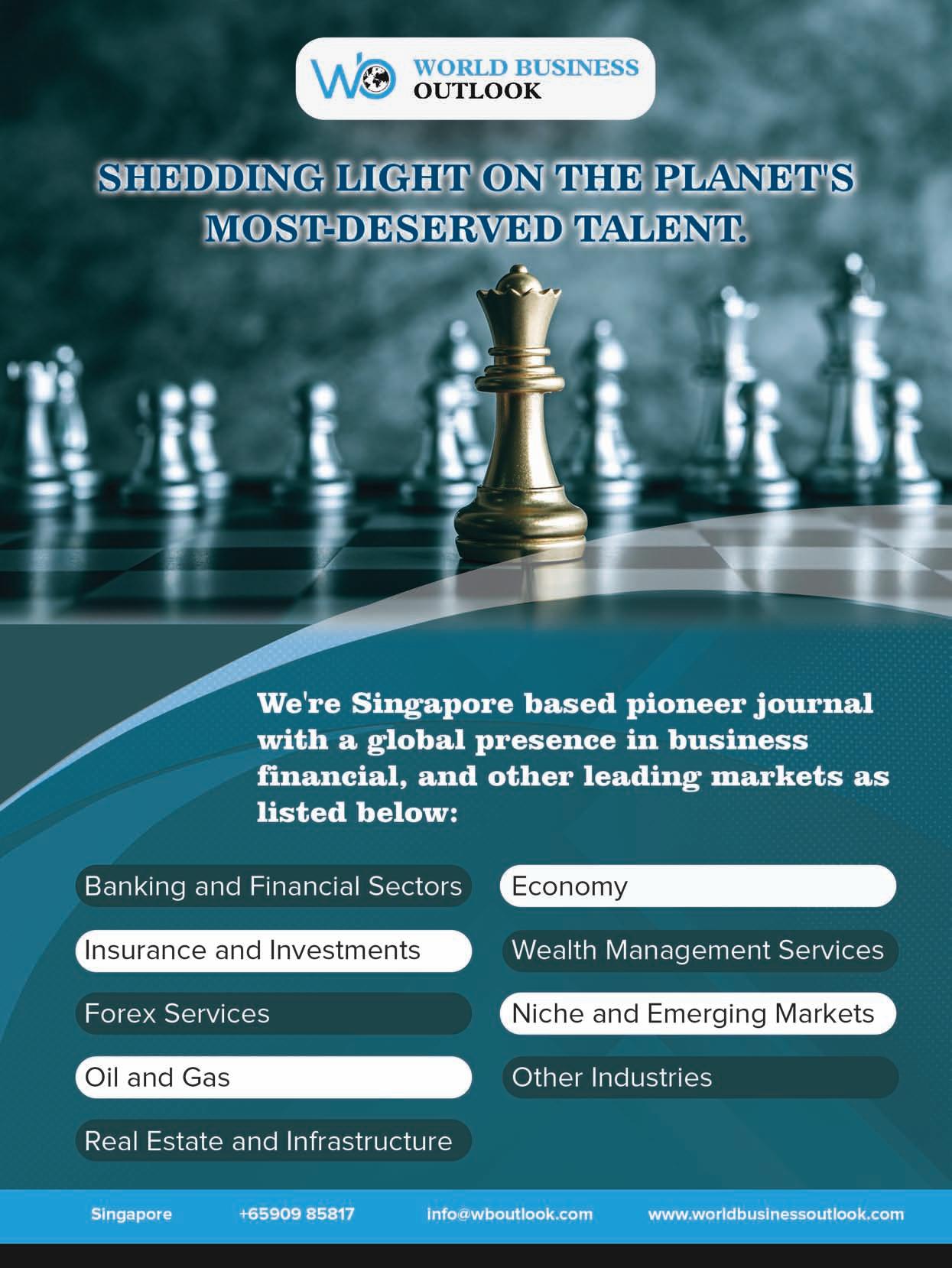








































 - Ashish Proothi of Xebia
- Ashish Proothi of Xebia































































































